20/20 VISION
FOCUS ON IMPLEMENTATION OF THE GLOBAL SULPHUR CAP

INSIDE THIS ISSUE:
New fuels - what are the options?
Using additives to ease switch over problems
Barges - designing for the future


New fuels - what are the options?
Using additives to ease switch over problems
Barges - designing for the future
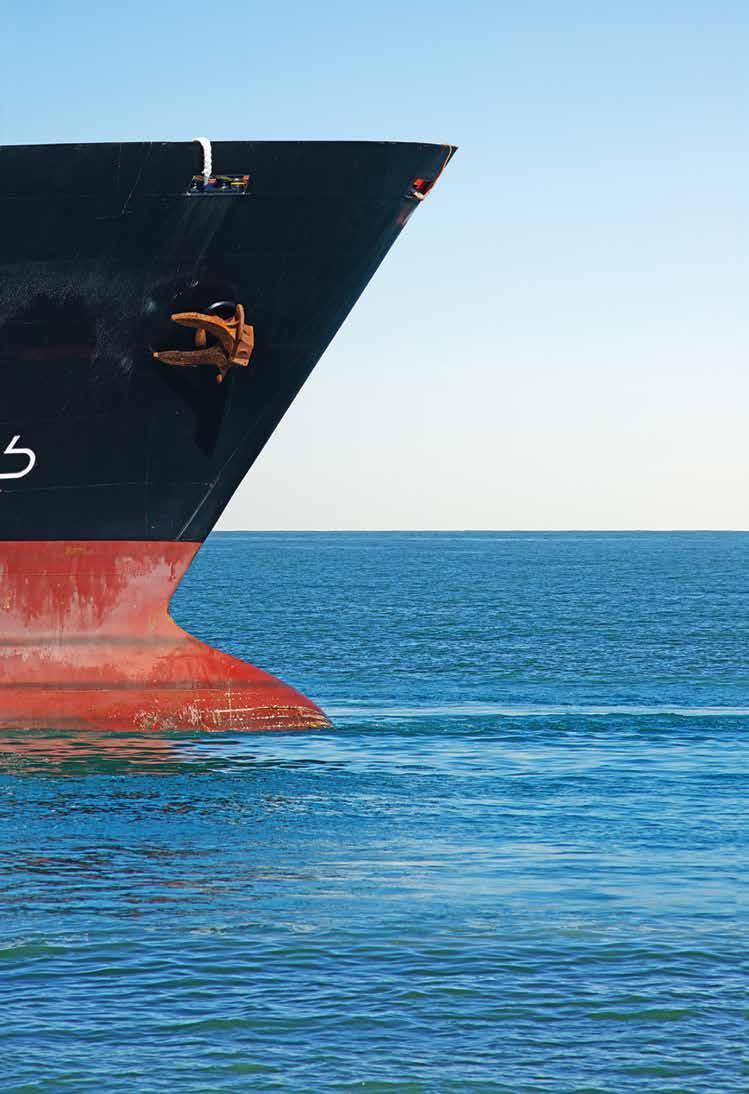
The International Bunker Industry Association (IBIA) is a professional association representing more than 900 organisations and members who are part of the marine fuels supply chain from the wellhead to the funnel.
IBIA is now seeking an exceptional leader for the role of CE. The position requires an individual with a very strategic outlook, outstanding relationship management skills, political adroitness and the relevant operational leadership experience to lead and develop the organisation through its strategy to 2020, and beyond.
Sitting at the heart of the sector, IBIA works to influence governments and policy-makers, develop the skills of people in the sector, build organisational capacity and effectiveness, and provide opportunities to exchange information, knowledge and expertise.
Email:
Telephone:
The successful candidate will bring compelling, senior executive leadership experience relevant to working in this international sector and an evident passion for, and appreciation of, emerging trends in the industry, alongside excellent commercial and relationship management skills.
Experience of membership organisations or a track record of effective stakeholder management and partnership working in complex environments, as well as the ability to lead and develop a team, will also be important along with financial management skills.
The role will be London based but involves some travel, and reports to the IBIA board.
To apply, please send a cover letter and your CV by email or by post as follows;
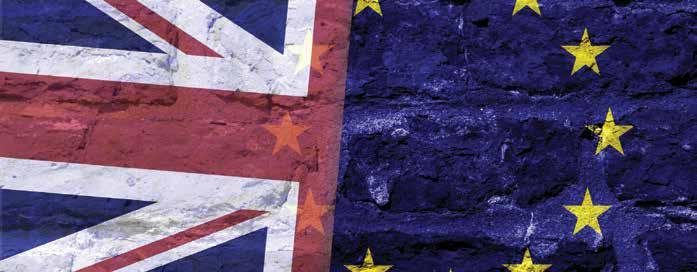
The word ‘uncertainty’ has been used a lot in the media recently; on the future of a world with the US led by President Donald Trump, in the context of the UK decision to leave the EU – or ‘Brexit’
The word ‘uncertainty’ has been used a lot in the media recently; on the future of a world with the US led by President Donald Trump, in the context of the UK decision to leave the EU – or ‘Brexit’ –and, when talking about bunkering, on whether there will be chaos when the 0.50% limit on sulphur in fuel comes into effect.
Of course the first two topics do have implications for our industry. President Elect Trump has said he wants the US to pull out of the Paris Agreement on reducing greenhouse gases, and especially CO2 Whether that will happen and, if so, what impact it will have on the whole Paris process remains to be seen.
As it happened, just as US voters were casting their votes the UN Framework Convention of Climate Change (UNFCCC - COP 22), was underway in Marrakesh, Morocco. Shipowners’ body the International Chamber of Shipping (ICS) took the opportunity to support the goal of cutting greenhouse gas emissions from ships.
At an official side event organised by the International Maritime Organization, ICS Director of Policy and External Relations, Simon Bennett, said:
“We are very optimistic that initial CO2 reduction objectives can now be developed by IMO for the sector by 2018. The shipping industry thinks these should reflect the spirit and ambition of the Paris Agreement while being appropriate to the
circumstances that apply to international shipping – just as the commitments made by governments to UNFCCC reflect the circumstances of different national economies.”
Bennett went on: “The final stage to be enacted by 2023 should establish a global mechanism for ensuring that these initial IMO commitments – which the industry wants to see agreed by 2018 – will actually be delivered”. With some understatement Bennett noted: “This remains very controversial and is not yet universally supported throughout the shipping industry. But if this is what governments eventually decide, the clear preference of the majority of the industry would be for a global levy based on fuel consumption.”
The new uncertainty is whether US electors have just pulled the rug out from underneath the Paris Agreement.
And Brexit? Well, this topic is closely related to the last one. The EU has a track record on imposing unilateral regulations on international shipping coming to its shore, notably evidenced by its ban on liner shipping conferences. Some EU parliamentarians, encouraged by environmental campaigners, want to go it alone again and impose CO2 reductions without waiting for IMO. That would be far less effective in an EU without the UK. Ironically it might conceivably be more likely to happen if the UK is no longer a party to such decisions.
To move on to the third topic, this clearly is a key industry issue right now. That is why large parts of this issue are devoted to it. Our deputy editor Unni Einemo has her finger right on the pulse when it comes to developments at IMO. Not only is she a vital part of the World Bunkering team but is also IBIA’s IMO representative. So our Environment pages in this issues will bring you absolutely up to date with the implications of the 2020 decision.
There is much else in this issue of your magazine which reflects an industry dominated by uncertainty (that word again) and major challenges but also the exciting technical advances that are taking place and transforming the bunkering business. That means that there will be a lot to talk about when IBIA members gather in London in February for the Annual Dinner. See you there.

David Hughes Editor
Publisher & Designer: Constructive Media studio@constructivemedia.co.uk
Editor: David Hughes anderimar.news@googlemail.com
Deputy Editor: Unni Einemo unni@ibia.net
Project Consultant: Alex Corboude alex.corboude@mar-media.com
On behalf of:
IBIA Ltd
4th Floor
50 Liverpool Street
London EC2M 4PR, UK
Tel: +44 (0) 20 3397 3850
Fax: +44 (0) 20 3397 3865
Email: ibia@ibia.net
Website: www.ibia.net
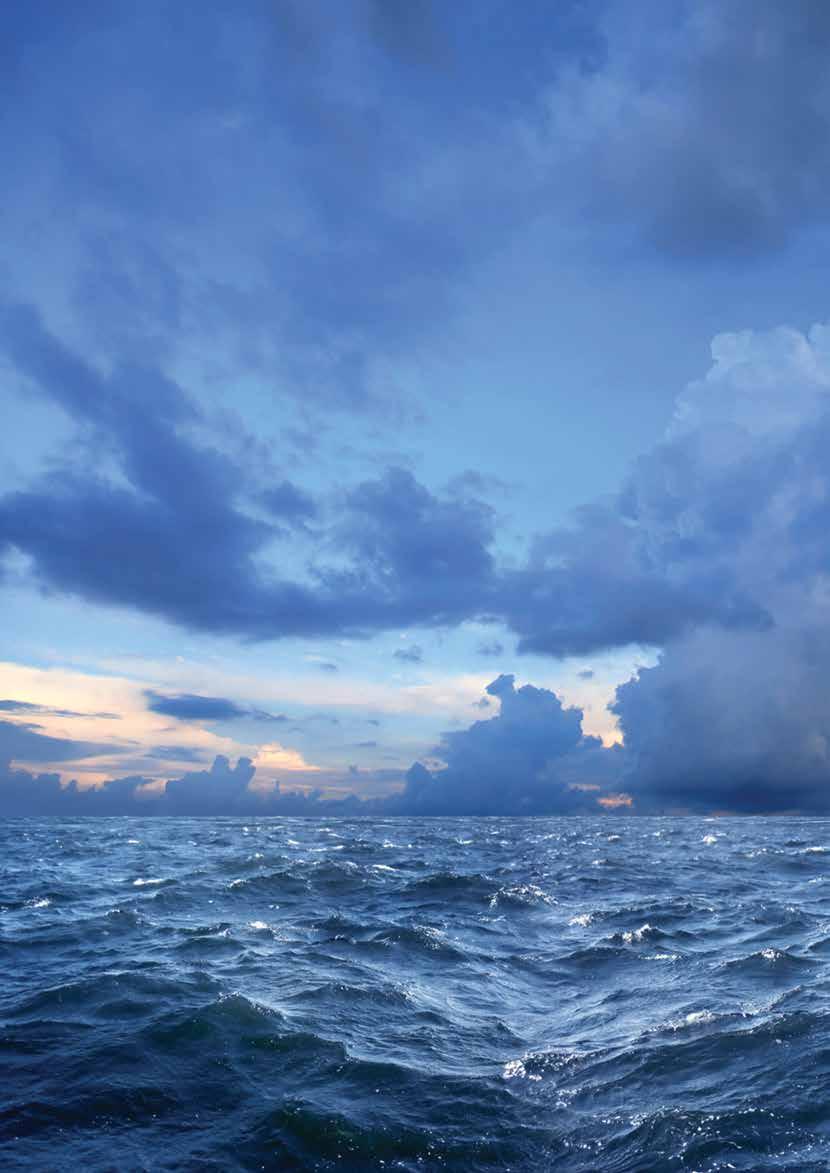
The views expressed in World Bunkering are not necessarily those of IBIA, or the publishers unless expressly stated to be such. IBIA disclaims any responsibility for advertisements contained in this magazine and has no legal responsibility to deal with them.
The responsibility for advertisements rests solely with the publisher. World Bunkering is published by Constructive Media on behalf of IBIA and is supplied to members as part of their annual membership package.
Constructive Media
50 George Street, Pontypool NP4 6BY
Tel: 01495 740050
Email: ibia@constructivemedia.co.uk www.worldbunkering.com

It
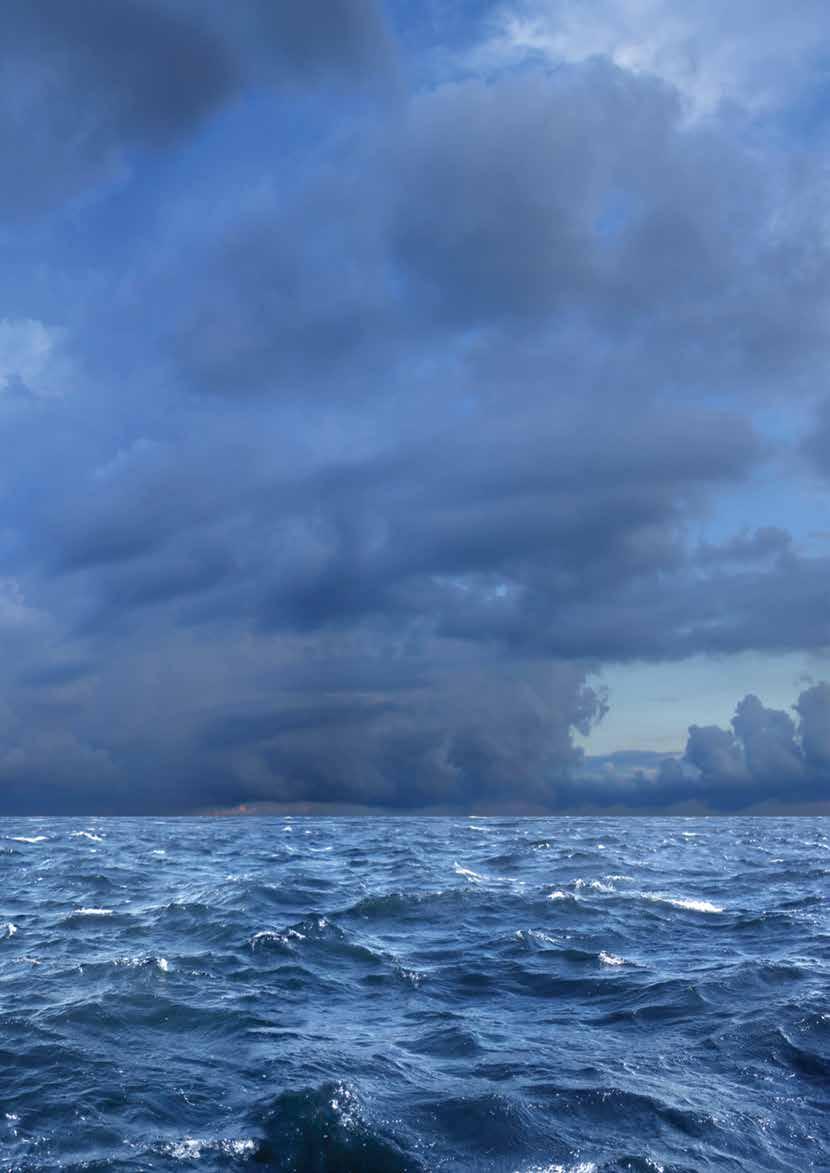
First I would like wish you
The final leg of 2016 has proved to be a busy one for the IBIA in Africa branch; with the Africa Forum in Cape Town, African Ports Evolution in Durban and the Annual IBIA Convention in Gibraltar, reports Tahra Sergeant
Niels Bjørn Mortensen, who was Director Regulatory Affairs at Maersk from March 2010 until late 2016, talks to Unni Einemo
Fitting abatement technology to vessels is an option likely to be followed by a significant number of owners
With the 2020 sulphur cap decision fresh in mind, there was much to discuss as a wide range of industry stakeholders gathered in Gibraltar in early November for IBIA’s annual convention
IBIA board member Nigel Draffin reports on an IMar EST seminar on new fuels that took place in London recently
ExxonMobil has introduced its second independently accredited mass flow metering system (MFMS) in Hong Kong onboard the bunker vessel, Anelly
While a considerable amount of effort is now going into developing LNG barge designs there is still a market for very simple HFO and MGO barges
After nearly a decade as our representative at IMO, IBIA bids John a fond farewell
The IMO decision on the global sulphur cap is clear, but will it be able to see it through perfectly?
The bunker industry in Northern Europe is investing and adapting to meet a changing market
The additive providers are responding to the needs of the market as shipowners switch to distillates or ULSFO while in ECAs
John Rickards takes a look at Africa’s diverse bunkering scene
Olga Bogacheva reports on a busy Russian bunkering scene
MEPC’s decision on a 2020 deadline is seen as boosting LNG as a marine fuel 26
In response to concerns over emissions from cruise ships the News South Wales government has mandated the use of low sulphur fuel in Sydney Harbour and is enforcing the new regulations
53 - 54
Fuel Management
The MEPC’s call for the reporting of vessel fuel consumption highlights the growing importance of advanced fuel management systems 55 - 56
Innovation
Our regular survey seeks out innovations that are set to impact the bunkering industry
The latest prosecution of a shipowner, ship manager and senior engineers by US law enforcement authorities for oil record book offences has also revealed systematic theft of the ship’s bunkers
Many South American companies are on the expansion trail but there are concerns
Norway-based shipowner Stenersen has ordered a new direct-drive permanent magnet shaft generator solution order for its chemical tanker newbuildings 59 -
Once again Singapore’s biennial bunkering conference drew in the crowds and provided the backdrop for major initiatives


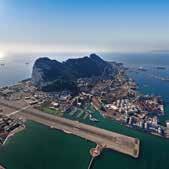
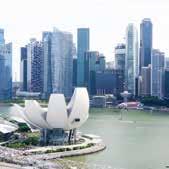

It has been a dramatic fourth quarter for IBIA. Firstly the confirmation of the introduction of the global cap in 2020, followed two weeks later by the Association’s chief executive, Capt. Peter Hall announcing his retirement.
Now that our industry has a date for the global cap, participants in all sectors and levels will have to start planning their responses. Initial discussions since the IMO decision still see many with their heads in the sand, considering 2020 the distant future. In fact it is only 1,000 days away. Refiners we have spoken to are not all enamoured of investing to supply the bunker market. They don’t all “trust” the shipping community to comply and at the same time see a very strong case for scrubbing which could maintain the demand for residual at higher levels than predicted in the studies presented at MEPC 70.
Most accept that when the global cap comes into force, demand for residual will drop off and in the short term so will residual prices. Parity with coal prices has been discussed which would see high sulphur bunkers prices at around $100/ton. Although this situation may only last a short period it will be a massive incentive for ship owners to invest in scrubbing, particularly as prices for low sulphur fuels will simultaneously rise. The standoff between refiners investing in capacity to produce maximum 0.50% sulphur bunker fuel and owners investing in scrubbers will no doubt go down to the wire with IBIA continuing to keep our membership informed and respond to their queries.
IBIA is also making a significant contribution to this debate at IMO where the Association will submit at least one paper outlining approaches to minimising the likely chaos in the early 2020s. IBIA is also proposing ways to improve compliance, for example, through possible amendments to Annex VI to ensure ships cannot carry fuels above 0.50% sulphur in their bunker tanks unless that ship has approved alternative compliance methods or derogation, for example, if compliant fuels are not available.
The desire of IBIA and others to improve compliance not only moves us nearer to a commercial situation where all owners compete with similar costs; it also reduces the uncertainty about actual demand for 0.50% fuels.
The desire to improve compliance also falls into line with IBIA’s strategy to facilitate better and universal bunkering procedures. This is being pursued within the IBIA Port Charter, an innovative approach instigated by Peter Hall. The major bunkering ports of Rotterdam, Singapore, Gibraltar and Tenerife have all aligned with the IBIA Port Charter. The lessons being leant with these ports together with IBIA’s own innovative approaches to operating procedures and, in particular, mass flow meters (MFMs), is providing a sound position to promoting better practice in bunkering ports globally and will continue as IBIA responds to requests from Panama, Jamaica, and a number of Asian ports. Peter provided a clear way forward in his address to the IBIA convention held in Gibraltar in early November. As this was the first conference after the global cap announcement it provided an excellent, early sounding board on how bunker consumers, suppliers and the bunker service sector are reacting and starting their planning. The debate confirmed the degree of uncertainty at this stage demonstrating the need for informed judgement and interaction with not only IMO and the member states, but also with other international shipping and environmental organisations, a role vigorously pursued by IBIA.
As chairman of the board of IBIA I would like to offer Peter, on behalf of the members of IBIA and the board, our heartfelt thanks for the effort he has put into IBIA in his three years as Chief Executive. He has more than doubled the membership, and as noted, instigated the port charter while significantly boosting IBIA’s role in providing events and training, both regionally and globally. Peter has also very strongly supported IBIA Asia Ltd’s efforts in Singapore to facilitate the introduction of MFMs by providing the training of managerial and technical staff. IBIA has grown in Africa and the adjacent islands as a direct result of Peter’s vision, strategy and personal efforts.
Peter has moved IBIA to London, established a new office in Singapore where a greater part of IBIA’s administration is being undertaken, and IBIA will soon have new office in Cape Town.
Peter will step down from his position as Chief Executive in the spring of 2017 but has graciously agreed to coordinate the recruitment of his successor and subsequently be available to ensure a smooth transition.
We all wish him well in his retirement where he intends to continue to help ports develop, but enjoy more time in the company of his grandchildren and family in Australia.
Robin Meech Chairman
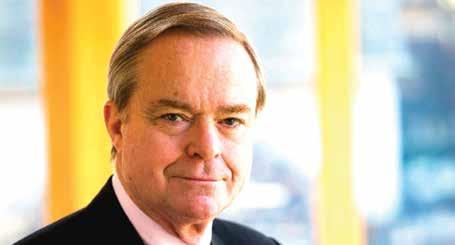
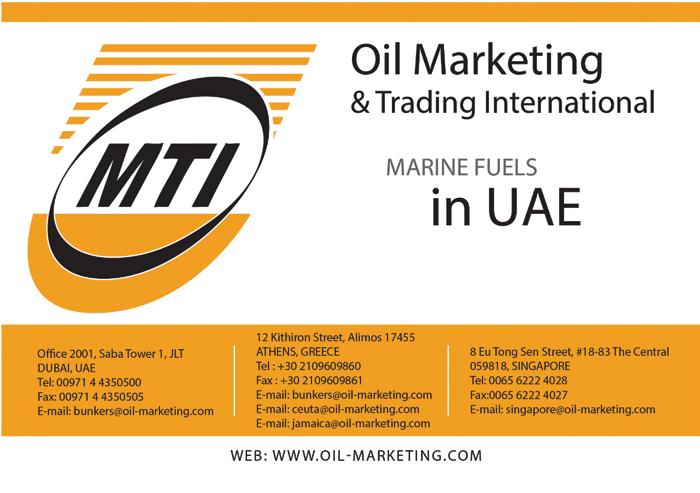
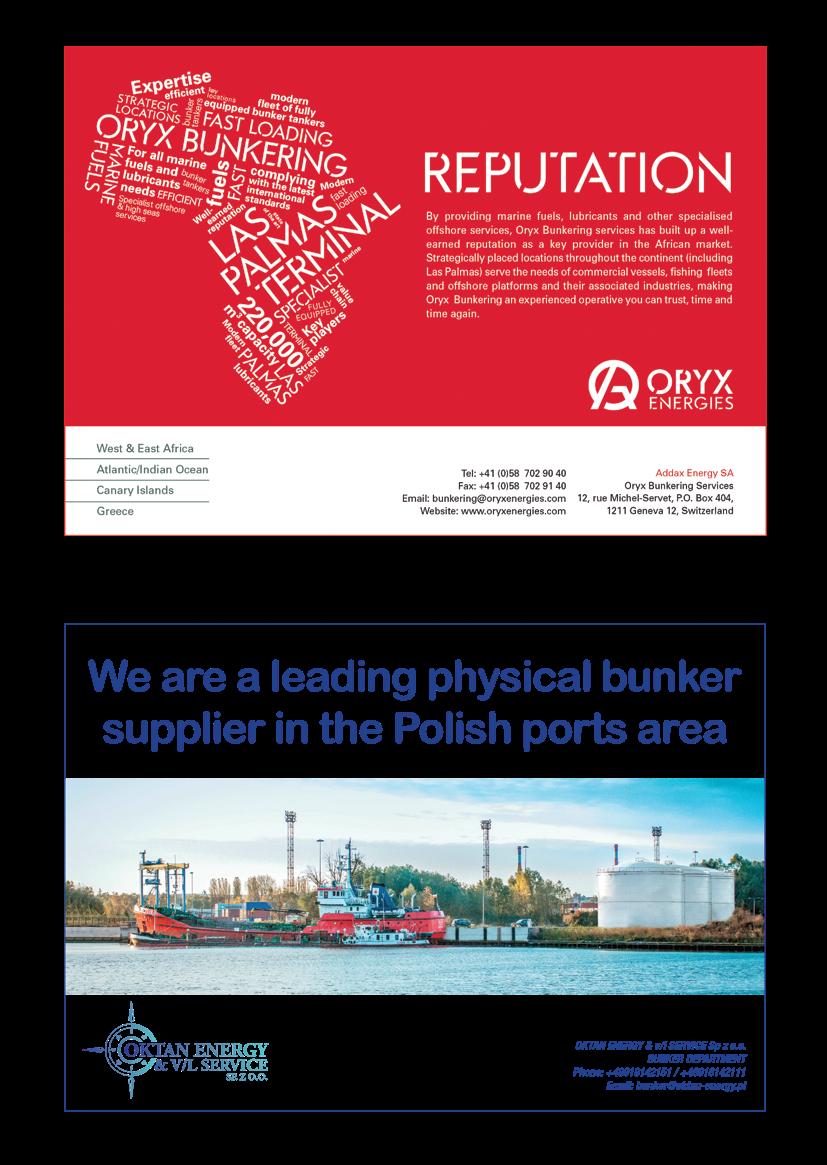
First I would like wish you a prosperous New Year
As I write, we approach Christmas and the end of 2016. This is a very special time of year to reflect and appreciate what has been done (giving gifts is an expression of this) and looking forward with purpose and a plan, through which we can prosper. In this vein, this has been an exceptional year for IBIA.
We have submitted a record number of papers to the IMO, held more IBIA events than ever before, changed offices in Singapore, and broken the record with the numbers of training courses delivered to industry. We continue to increase our membership and we are closing in on our 1000 members target.
We have upped our game in communication, producing a consistent newsletter, with regular updates on the latest information. We continue to engage with industry and develop procedures. This has only been possible through the dedication, hard work and commitment of the secretariat, who have driven these initiatives, and physical changes. So a big thank you needs to go to them; without them we would not have accomplished so much on your behalf. I personally greatly appreciate what they have done and their unstinting support. I am equally a realist, the more you deliver the greater the expectation and this level of growth has to be sustained.
Sustainability will only be achieved through you, your participation and involvement, we (the secretariat) would like to thank you (the membership) for your support, in contributing views and participation in the workgroups. Your patience whilst we have dealt with your queries has been appreciated.
It is remarkable when I look back over the past 4 years and see what has been achieved, without appreciably increasing the headcount of the Association. Robins introduction identifies some of the specifics.
I am sure you will have noticed the front cover, 20/20 and the implication that we need to take a long hard look at the situation in order to respond to the future.
The eyes are said to be “the window to the soul” and there is much said in medicine and science about diagnosing the health of an individual by looking into their eyes. Can we duplicate this analogy for our industry? I think we can.
I would like to look back, in order to look forward, as quite often the lessons we learn help us in the future. I was once told that only an idiot repeats the same process and expects a different outcome. Therefore our ability to learn and move forward is through adaptation (amending current practice as a result of the lessons learnt) and innovation.
“Too good to be true”
Clearly a lesson to learn is the “deal too good to be true”. At the start of the bible we read about man being tempted by a situation, a good deal, that was indeed too good to be true – it was, and it was deception.
In Autumn 2014, I wrote an article titled “Fact, Perception and Politics”. I find that we constantly wrestle with these three characters in life. They are all wrapped up in opinion and are presented through personality - where the impact is made or lost! We see this all too often in our industry and we do need to investigate the matter at hand with hard facts, good practice and transparency.
In winter 2015 I wrote about “An era of opportunity, in the “New World” Pioneers and Settlers wanted!”

Captain Peter Hall Chief Executive, IBIA
We certainly need the pioneers to break through into new areas and the settlers moving in to develop the bridgehead of innovation and build upon viable efficient ways. But the main issue is we need an association that is passionate about people and their views.
A calendar of events has been produced for 2017 with a focus on meeting the membership and developing best practice in the industry. We aim to achieve this through regional meetings, lunches and forums along with IBIA’s presence at major conferences, plus at each event we would to facilitate some form of training. The Association’s working groups continue to be very active, covering a wide range of issues such as legal, fuel quality, new fuels, IMO regulations, development of standards, education and training, publications, strategy … the list goes on. With this growing list we would welcome new volunteers to both expand our breadth and support the workload.
Last but not least a reminder that the board elections will take place in January; your opportunity to elect the individuals that will take part in the governance of the Association. Please look out for the election information which should land in your in-box during the first week of January.
A number of things to do but a new year to achieve them in. I hope you have all had a great break, refreshed for the year ahead.
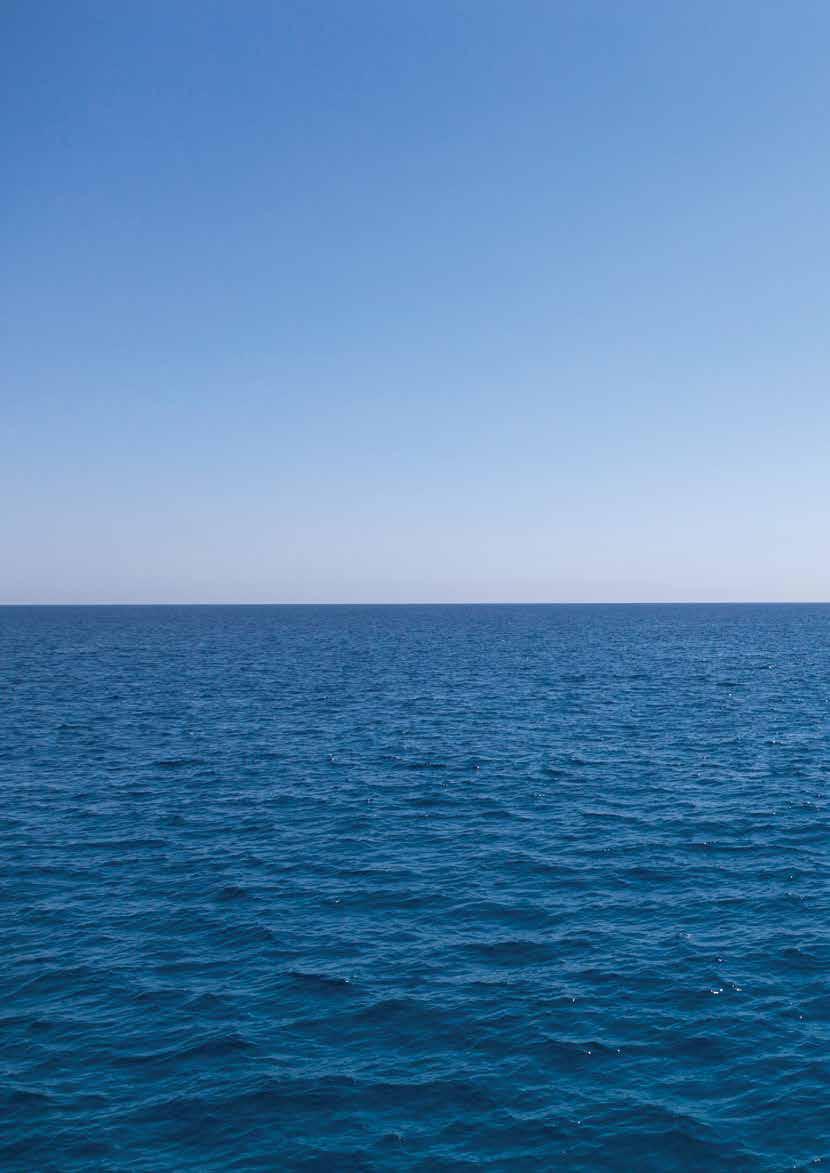
Ship Manager
Silvian Boulot
Augusta Energy SA Africa
sb@augusta-energy.com
Ship Owner
Richard Ho
Tumpuan Megah
Development SDN BHD Asia
sales@tumpuanmegah.com
Ship Manager
Eurgene Siew WT Marine Pte Ltd Asia
finance@wt-holidings.com
Sales Assistant Christine Munisami Hanwa Co., LTD South Africa Africa
Director Tamura Masahide Hanwa Co., LTD South Africa Africa
Service
Mark Deverill Genscape Inc USA mdeverill@genscape.com Service
Colin Halling Genscape Inc Europe challing@genscape.com
Trader
Enrique Van Den Brink Cadoil Spain S.L Europe evdbrink@cadoilspain.com
Storage Arjan Donatz Service Terminal Rotterdam B.V. Europe arjan@serviceterminal.com
Storage Maud Eijgendaal Port of Rotterdam (POR) Europe ML.Eijgendaal@portofrotterdam.com
Agent
Ramon Zubiaga Garteiz
Consulmar SL
Europe
Storage
Dewian Jagmohan
Vopak Terminal Algeciras S.A Europe
dewien.jagmohan@vopak.com
Buyer
Richard Butler
Teekay Shipping Co. Europe
Richard.Butler@teekay.com
Storage
Kamal Lakhams
Tanger Med Port Authority
Africa k.lakhmas@tmsa.ma
Service
Praneeth Gunawardena Lanka Martime Services Ltd Asia
praneeth.gunawardena@moceti.com
Agent
Juan Jose Baeza Bacomar Europe juan.baeza@bacomar.com
Agent
Juan Flores Gibport Services Europe j.flores@asgshipping.com
Agent
Tania Flores Mora Gibport Services Europe operations@asgshipping.com
Legal
Felipe Arizon
Felipe Arizon Europe felipearizon@arizon.es
Project Manager
Shani Ghurburrun Port Agency
Services Mauritius Africa
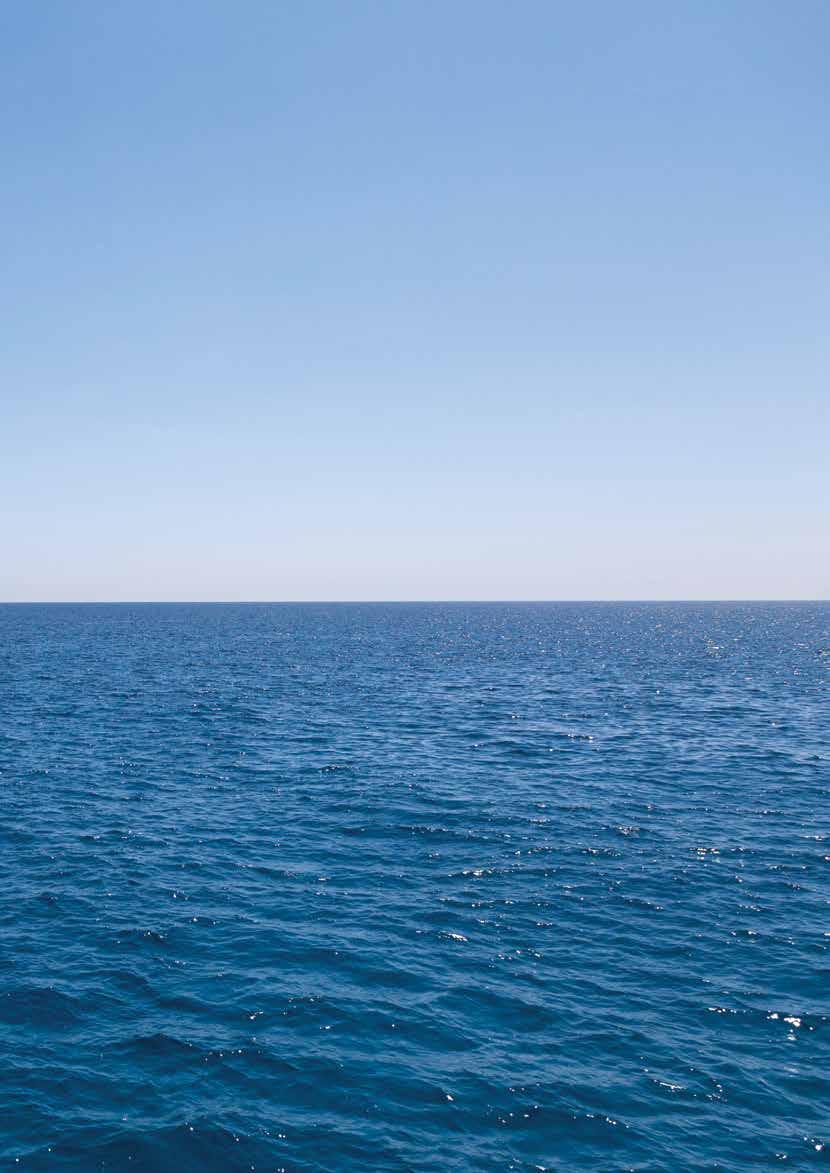
Director
Rony Ragavoodoo Port Agency
Services Mauritius Africa
Peter Murungi VIVO
Namibia Africa
Educan Calvyn Riekert VIVO
Namibia Africa
Captain Rufus Lekala
TransNet Ports Authority, South Africa Africa
Student
Lifa Mahlangu
Gateway City College
South Africa Africa
Student
Neliso Diliza
Gateway City College
South Africa
Africa
Director
Chris Mccan
Ocean Masters
South Africa Africa
Director
Douglas Tamsanqa Xhallie
Kinsey Resources (PTY) Ltd
South Africa Africa
ASSOCIATE
Service
Felicity Nelson
UK Chamber of Shipping
Europe
fnelson@ukchamberofshipping.com
Individual membership: £200
Corporate membership: £995
Corporate additional membership: £200
These increases took effect on 1 August 2015.
The Board has also decided that the present practice of listing Corporate Additional Members does not properly and fairly meet members’needs and some changes have therefore been introduced that will more accurately match the benefits of membership to its cost; affected members will be contacted directly by the Secretariat.
If you have any queries or comments about these changes, then please contact ibia@ibia.net or telephone: +44 (0) 20 3397 3850.

IBIA NOTICEBOARD
Benefits to members as of 1st February 2016

Newmemberbenefits
• effectiveAdiscountedtravelclubthatofferscost flights
• secretarialMeetinglocationinCentralLondon,with services(atcosteffectiverates) comingPlusnewbenefitstobeannouncedinthe weeks‘CareersandJobinformation’isFurtherinformationonmemberbenefits availableonourwebsite
• yearsMultipleyeardiscounts15%discountfor3 membership,(Paidinoneinstalment) the–Guaranteenomembershipincreasesfor next3years
IBIAWorld Bunkering Magazine –free copies for Members of IBIA
Please note non-members are requested to subscribe to the magazine at a cost of Pounds Sterling £45, £60 or £80 depending on location.
Up to 20 additional free copies of the magazine are offered to buyer members of IBIA for forwarding to their vessels.
IBIAWorld Bunkering Magazine –discounts on advertising
Discounted advertising rates are available for members with savings dependent on the advertisement size. Please contact the Advertising SalesTeam at Maritime Media London on + 44 (0)20 7386 6100
IBIA List of Members
If your details are not correct, please log on to our new website and update them on your members page.The new website is designed so members can easily access and change their own information.
This publication is only available to IBIA members.
IBIA Guide to In-Line Blending
Available free of charge to members
IBIA Guide to Avoiding and Resolving Bunker Disputes
IBIA members receive their personal copy free, but the report is offered for sale to non-members at £50.
Evaluate the Merits of a Bunker Claim
Interpretation of specifications for bunker fuels and a guide to the question of repeatability.
For sale to non-members at £35.
IBIA Glossary of Bunker and Lubricating Oil Terminology
A comprehensive guide to all those complicated terms that are in daily use in the bunkering industry. For sale to non-members at £45.
IBIA Guide to Good Commercial Practice
On sale to non-members at £50 per copy.
IBIA Safety Cards for vessels’ crews
IBIA buyer members receive copies of the IBIA Safety Cards for distribution to their ships, giving basic, plain English advice about safe handling of bunker fuels.
Please note that all of the above publications can also be downloaded by members by visiting www. ibia.net and logging into your account. Please then go to the download section of the website.
IBIA Logo
Free bromide supplied for use by corporate members only.
The final leg of 2016 has proved to be a busy one for the IBIA in Africa branch; with the Africa Forum in Cape Town, African Ports Evolution in Durban and the Annual IBIA Convention in Gibraltar, reports Tahra Sergeant
Asuccessful Africa Forum was held on 14 – 16 September in Cape Town, South Africa. The forum consisted of a 1 day Basic Bunkering Course, a full day conference programme, and a half day Port Tour hosted by Transnet National Ports Authority (TNPA) in the Cape Town Port area.
With the support of the IBIA Secretariat and Africa Exco, the Basic Bunkering Course was held at the Portnet Building in the Port of Cape Town. The Basic Bunkering Course has evolved over time and the delegates were taken through the material by our experts:
• Peter Hall, CEO IBIA
• Patrick Holloway, Partner, Webber Wentzel, IBIA Board member
• Dian Esterhuyse (1st class combined Chief Engineer cert, served FG on a range of vessels now General Manager for Unicorn, physical suppliers in Cape Town)
The forum itself featured a full day programme with an overview of the global and Africa scene, and a number of presentations from suppliers and government departments.
Speakers:
Captain Peter Hall Chief Executive The International Bunker Industry Association
Patrick Holloway Partner Webber Wentzel, South Africa
Captain Rufus Lekala Chief Harbour Master, South Africa TNPA, South Africa
Unni Einemo IBIA IMO Representative IBIA
Jon Hughes Managing Director SABT, Africa
Rajanah Dhaliah CEO State Trading Corporation, Mauritius
Steve Hillary Consultant Ex Shell and Vivo Energy
JJ Metey Managing Director Aegean
Captain Daron
Burgess Senior Technical Manager: Southern Region SAMSA, South Africa
The bunker market in Africa is evolving, with real opportunities for those willing to invest time and resource to overcome the obstacles. Illicit activities and poor practices are becoming less common, regulation is increasing and quality of service is improving. However, the increased regulation has in some places reduced competitiveness and as a result, is restricting market growth.
This was the conclusion of the speakers and delegates at the IBIA Africa Regional Forum held in Cape Town, South Africa. The Forum was chaired by IBIA board member Patrick Holloway of the law firm Webber Wentzel. In addition, Peter Hall spoke about global trends and outlined the components required to set up an ideal bunker hub, and Unni Einemo outlined the challenges of the IMO’s sulphur regulations. The day saw good debate with many questions raised and answered, and was well received by participants, as indeed was the dinner and drinks in the evening.
The final leg of the Africa Forum was an opportunity to participate in a guided port tour, preceded by a presentation by Coen Birkenstock, Manager: Corporate Affairs at TNPA. He spoke about ongoing and planned investments in South Africa’s ports as the country seeks to grow its relevance as a strategically positioned hub for shipping. During the port tour we also got a good look at Unicorn’s bunkering vessel ‘Southern Valour’, the only bunker barge operating in Cape Town.
The forum and branch attribute the success of such activities to the support of our members, local government agencies and sponsors. We would like to thank Aegean, SABT and SMIT Amandla Marine for their participation as sponsors to this event.
We would also like to welcome our newest members to IBIA, and we look forward to engaging with you:
Company Name
Hanwa Co., LTD Christine Munisami
Hanwa Co., LTD Tamura Masahide
Marubeni Corporation Maemoto Yoshihiro
Port Agency Services
Mauritius Shani Ghurburrun
Port Agency Services Mauritius Rony Ragavoodoo
VIVO Namibia Peter Murungi
VIVO Namibia Eduan Calvyn Riekert
TNPA Captain Rufus Lekala
Gateway City College Lifa Mahlangu
Gateway City College Neliso Diliza
Ocean Masters Chris Mccan
Kinsey Resources (PTY) Ltd Douglas Tamsanqa Xhallie
IBIA Africa has a longstanding relationship with African Ports Evolution, and once again attended this conference held in Durban in October. Now in its sixth year, it is Africa’s biggest maritime summit and expo. It has the unique ability to bring together industry experts from across the continent and the world to present solutions to the African maritime sector. IBIA has had the opportunity to engage with attendees over a number of issues and strategies, including the IBIA Port Charter.
Finally moving to IBIA’s annual convention held in Gibraltar in November, this event saw a number of our members from the African region attending both the training and convention. This is a testament to the growth and development of the region and the value that IBIA has and continues to add. We hope to see more of our members attending the convention in Singapore in 2017.
For information about matters relating to IBIA in Africa, contact:
Tahra Sergeant, IBIA Regional Manager
+27 21 7905318 tahra.sergeant@ibia.net
Fitting abatement technology to vessels is an option likely to be followed by a significant number of owners
Now the International Maritime Organization (IMO) confirmed that a 0.50 percent sulphur in fuel will come into force in 2020 for everywhere outside the designated Emission Control Areas (ECAs) the Exhaust Gas Cleaning Systems Association (EGCSA) is confident scrubber sales are set to surge.
Prior to the key meeting of IMO’s Marine Environment Protection Committee (MEPC) in October, EGCSA presented its case in support of the implementation of the 2020 global sulphur emissions limit. The international association represents more than 25 member companies involved in scrubber sector
In his opening remarks, Don Gregory, director of EGCSA, highlighted the EGCSA’s “intimate involvement in regulatory and compliance development work regarding the SOx issue, including participation in EU sub-groups such as Port Reception Facilities, Measuring, Reporting & Verification and Exhaust Gas Cleaning Systems (EGCS), work on IMO EGCS guidelines and collaboration on both ISO and CIMAC fuel working groups, as well as work with relevant NGOs”.
Gregory pointed out that, by coordinating and collaborating with varied stakeholders and through the work of its members, EGCSA has taken concrete steps to enable the industry to install and operate sulphur abatement technologies more easily. The association had, for example, “driven the adoption of a simple, realistic solution on how to measure and monitor scrubber wash water to meet the IMO criteria”. It was now easier than ever for ship owners to be in compliance with an exhaust gas cleaning system because of this work, Gregory said.
According to the CEO of scrubber manufacturer Clean Marine, Nils Hoy-Petersen, it was understood that at least one paper prepared for MEPC used a scenario in which some 15 percent of the global fleet, in terms of ship numbers, are fitted with scrubbers. Writing in EGCSA’s Comment and Insight bulletin before the MEPC decision he said that, depending upon the dead weight tonnage of the ships placing scrubber orders, this could equate to nearer 30% of global fleet fuel consumption.
Hoy-Petersen said: “Plans and resources are in place to increase delivery capacity tremendously and scrubber vendors are working in a supply chain that is currently massively under utilised.” At the time however he was concerned that this resource and capacity could have become eroded if the entry into force of the 0.5 percent sulphur limit had been put back to 2025 or the decision is delayed.
Now that decision has been made it would there is little holding back greatly increased scrubber production. According to Hoy-Petersen, scrubber vendors now have significant experience with marine exhaust gas cleaning installations and while very large vessels with main engines of over 50MW have not had scrubbers fitted, virtually all types of ships have had installations.
Hoy-Petersen said that naval architects and project managers, essential for design and programme management, would be available partly due to the current downturn in upstream oil industry.
Fabrication requires materials and workshops, Hoy-Petersen observed. He said: “On a worldwide basis engineering fabricators and ship yards are at a low ebb.
Scrubber vendors are able to take advantage as scrubbing units are essentially portable so can be fabricated pretty much anywhere in the world and then transported for installation on the ship.”
“Similarly,” he continued, “many suppliers of scrubber system ancillaries such as instruments, pumps, pipes and valves are currently operating in a downturn, which enables the complete range of supporting equipment to be secured under advantageous market conditions.
“Most scrubber installations require either zero or a short dry-docking, however to give an indication of the scale of available resources, approximately 10,000 ships are dry-docked every year. Add to this the loss of new building orders and there is an instant capacity availability of over 20,000 dry-doc kings.
As of October, according the Hoy-Petersen: “The scrubber industry is definitely ready and capable, capacity and resources are available and market conditions are favourable. All that is needed now is the green light from IMO for go.” The industry now has that green light.
©Clean Marine’s scrubber is one of sevral competing systems now available.
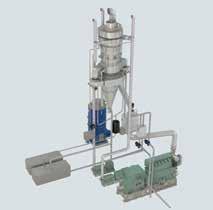
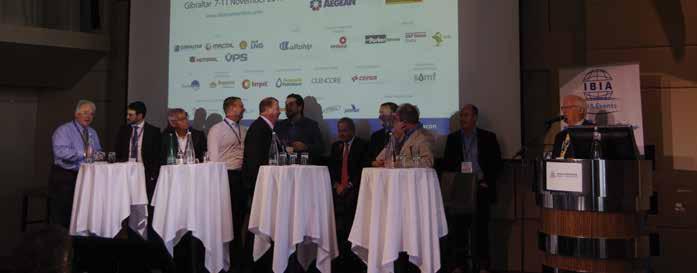
With the 2020 sulphur cap decision fresh in mind, there was much to discuss as a wide range of industry stakeholders gathered in Gibraltar in early November for IBIA’s annual convention. Unni Einemo reports
There are few locations quite so dedicated to shipping services in general, and bunkering in particular, as Gibraltar, making it a perfect location for IBIA’s Annual Convention. In his welcome address, the Hon. Fabian Picardo QC MP, Chief Minister at HM Government of Gibraltar, said the message from his government is that the port is a vital artery, supporting not just global shipping but the livelihood of Gibraltar itself.
There was much to talk about. In a week when Donald Trump was elected president of the United States; when we had just learned that the global 0.50% sulphur cap is coming in 2020; and the wounds caused by the collapse of OW, Hanjin and a slow global economy still bleeding, the world as we know it is changing. Some issues, however, remain the same, such as suspicions of short deliveries in a fiercely competitive market, and there was plenty of discussion about the role of mass flow meters.
What’s it like buying bunkers in 2016? Gearbulk’s bunker manager Mike Ball, stressing that he was not speaking for everyone, advised that out of 550 deliveries in 77ports,
using 48 different suppliers, Gearbulk had two debunkerings, six density differential claims and two quantity claims. The two debunkerings were in the ARA-region, while the two quantity claims were in Singapore, where, curiously, one was received from a barge using a mass flow meter (MFM) while the other was a ‘Cappuccino’ case. Ball said that ISO 8217:2010 specs are now readily available and noted that in Singapore, the premium over fuels sold to the 2005 spec are now negligible.
The biggest market issue from Ball’s point of view was the OW collapse, bringing the risk of double liens sharply into focus. Gearbulk’s approach has been to ask traders to confirm in writing that they have paid the physical suppliers or have relinquished liens. He was unimpressed with the BIMCO “no lien clause” which he said “requires some serious management ” to offer the desired protection.
On the fuel price side, owners are still benefitting from weak crude, but there is still a lot of price volatility on a day to day basis, making bunker purchasing difficult to manage and timing very important.
The convention heard how difficult times are for much of the shipping market, with low freight rates in most sectors and particularly the dry bulk market. The outlook remains weak but at least there is some modest recovery expected from 2017, according to Fotios Katsoulas from Affinity Research. Jens Maul Jorgensen, Director of the Bunker Department, Oldendorff Carriers, and a former Chairman of IBIA, saw no rebalancing of the dry bulker segment until 2018 at least and maybe even no rate recovery leading up to 2020.
Ball, Maul Jorgensen and Martin Laue Broderson, Head of Bunkers at the tanker operator Torm, were all emphasising the need to prepare for 2020, calling for industry stakeholders to work together.
With the 2020 goalpost in place, owners now have a clear date to consider their compliance strategies. For Torm, a lack of LNG bunkering possibilities means LNG is not an option. Tanker trading patterns are unpredictable and Torm takes bunkers in over 100 ports globally. But it will look at scrubbers, anticipating that will offer quick payback, though many vessels will be too old to consider retrofits.
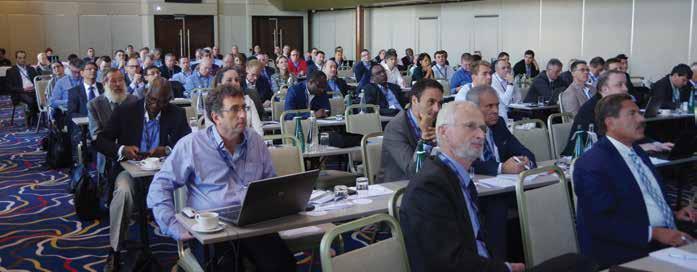
Gearbulk’s Ball put his faith in the bunker industry to be innovative in finding sources of low sulphur fuel, but in a future when owners are “faced with buying fuel oil at MGO prices” the most important element is to ensure a level playing field, not one where a large share of the global fleet isn’t compliant. That sentiment was echoed by Niels Bjorn Mortensen, who has recently retired from his role as Director of Regulatory affairs at Maersk. He pointed out that the sulphur regulation is unique as it is purely operational; there is no requirement to carry a piece of equipment to comply. That means evidence of compliance “is basically a piece of paper” and unless there are better ways to ensure compliance and dissuasive penalties for not complying, there is a risk that compliance with the global cap will be poor.
Robin Meech, Managing Director, Marine and Energy Consulting Limited and IBIA’s current Chairman, thinks compliance is going to be a major problem and predicted that the global cap won’t actually be fully effective until 2025. Nevertheless, he sees a big role for scrubbers due to favourable economics that will make payback very quick. In fact, he suggested that ships with scrubbers will do so well in the charter market compared to those using maximum 0.50% sulphur fuels that eventually having will become a business necessity.
For LNG, Meech said significant barriers remain, in particular the cost involved both in building LNG-ready ships and putting supply infrastructure in place.
Arjan Stavast, LNG Global Business Development Manager Marine, Shell painted a much rosier picture.
He said Shell can set up LNG bunkering in locations where they are already active in LNG supply to domestic users, including Norway, Rotterdam, Gibraltar, Middle Eastern locations, Singapore and Houston. Shell has taken a gamble to start setting up LNG bunkering infrastructure in the belief that demand will emerge. Stavast said we could see LNG supply and demand being balanced and workable globally in 5-10 years from now.
According to Mark Bell, General Manager, Society for Gas as a Marine Fuel (SGMF), the current gas fuelled fleet comprises just 0.14% of the total global fleet of 5,500 ships above 500 grt. There are some 80 LNG-fuelled ships in operation today and anther 80 on order, expected to grow to around 1,500 ships accounting for 2.75% of the world fleet over the next 7-10 years.
Are new fuels the answer?
The emergence of ‘new’ fuels – different from traditional marine gas oil (MGO)to meet the 0.10% sulphur limit in emission control areas has opened the market’s eyes to the fact that the global 0.50% sulphur cap will probably not be met by traditional marine distillates, but rather by a range of blends and refinery streams that we are currently less familiar with. Some are new to the marine fuels market, others are making a return. The question is, are they any good?
Three experts told the Convention that, by and large, the new ECA fuels (NEFs) are excellent, providing you can get them to the engine without something going wrong in the fuel handling process. Tim Wilson, FOBAS Product Manager, Lloyd’s Register, advised of a recent NEF that had led to severe sludging problems on several ships. Indeed, this is one of the main concerns about blends of distillate fuels with some residues mixed into them
– it can work well, or it can go wrong. Keith Forget, a Consultant that used to work for Shell, said refineries at present have excess cat cracker and vacuum distillates capacity, meaning they are producing a lot of vacuum gas oil (VGO) and that the marine man be attractive market for this. If refineries can sell what is essentially a feed stock, with just minimal upgrading, at MGO prices, they will do so, Forget said.
The conference also heard from one of the innovators with technology for producing low sulphur residual fuel from cheap high sulphur residues. John Gordon, Development Manager, Ceramatec, said the company’s DSU technology could produce compliant residual fuel with only a small capital investment and high yields. The company is currently running a pilot and aims to go commercial toward the end of 2019.
What does it take to create an ideal bunkering hub? Captain Peter Hall, IBIA’s Chief Executive, ran through some of the key components. They include access to product at competitive prices, having several suppliers to ensure healthy competition, and a strategic position with lots of shipping nearby to ensure a steady stream of customers.
These are the key ingredients to create a business case, but to ensure that the port’s bunker industry will thrive longer term, there needs to be good systems within the port to promote good services. This includes transparency to ensure that ships receive the right quality and quantity, and requires competency across all links in the chain, Hall noted.
Gibraltar has the ingredients highlighted by Hall. In addition, Commodore Bob Sanguinetti, CEO and Captain of the Port, Gibraltar Port Authority, highlighted the port’s drive toward ever greater service efficiency, high operating standards, and providing a wide range of fuels and services.
Gibraltar has plans in place to develop LNG bunkering capacity. So does Tenerife, Airam Diaz, Commercial Director, Ports of Tenerife, told the Convention. He said a regasification plant is being built to provide power for Tenerife, and will also fuel vehicles and ships from 2017. He said Tenerife could become ‘an ideal LNG hub’ for ships, highlighting that the area has big potential for growth to attract more passing trade.
Singapore is also going to introduce LNG bunkering. “Our aim is to provide all types of fuel the market needs,” said Md Elfian Harun, Assistant Director (Bunker Services), Maritime and Port Authority of Singapore. But that is just one of the things the port is doing to stay ahead of the curve. MPA is proactively looking at all new developments that may become game changers, Harun said. It began work to introduce MFMs in 2009.
It has been a long process, with the first MFM approved by MPA in 2012. With the 1 January 2017 deadline for making MFMs mandatory, 88% of fuel oil barges have approved MFM systems as of early November. The next step will be to introduce MFMs for distillate deliveries and real time electronic bunker delivery notes. The MFMs are part of efforts to ensure “only the right type of suppliers” remain active in Singapore, Harun said.
No conference is complete without good debate, either during Q&A sessions or over a drink or dinner in the evenings. We had ample opportunity for networking with three evening events on the programme; drinks and dinner at the Rock Hotel on Tuesday night, drinks and canapes at the stunning St Michael’s Cave on Wednesday evening, rounding off with a gala dinner on Thursday night at the top deck of the Sunborn, the cruise ship hotel that hosted the IBIA Convention. There were also excursions on offer to see an oil terminal and bunker barges; giving opportunity to observe the business end of the industry.
The conference programme itself ended with IBIA’s ‘bunker surgery’ providing a panel of experts to answer questions from delegates. Discussions centred on the problem of securing payment for a bunker stem if a link in the chain fails, the role of mass flow meters, and general industry ethics both on the supplier and buyer side, and how we can promote better standards. Discussions about 2020 showed that while everyone is thinking about what to do, concrete decisions have yet to be made.
With presentations and participation by bunker buyers and sellers, analysts, consultants, technical experts from fuel testing and engine manufacturers, innovators, IBIA’s chief executive and IMO Representative, IBIA’s Annual Convention provided a 360° view on current bunker industry issues. It only remains for IBIA to thank Nigel Draffin for chairing the conference, Petrospot for co-organising it, our generous sponsors that helped keep us all well fed and watered throughout the event, and the Port of Gibraltar authority for making us all feel so welcome.

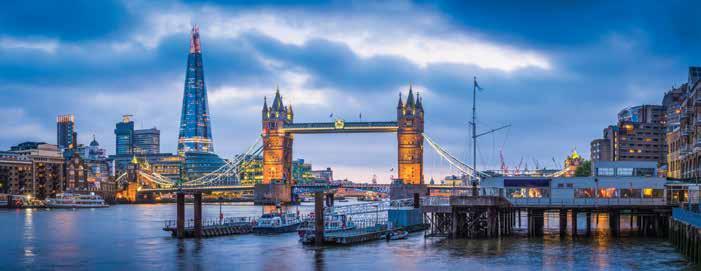
IBIA board member Nigel Draffin reports on an IMar EST seminar on new fuels that took place in London recently
The Institute of Marine Engineering, Science and Technology held a seminar at Lloyds Register on the 1st of November for the Alternative Fuels For Shipping special interest group. The event was well attended with over 40 delegates from a wide range of backgrounds.
The chairman of the event was James Ashworth of Tri-Zen International who also gave the opening presentation on LNG as the “Final Fossil Fuel”. He cited the recent commercial failure of significant shipping operators such as Hanjin (a failure to change with changing times) and Swiber (the loss of their offshore oil market opportunities).
Ashworth told the delegates that the recent International Maritime Organization (IMO) Marine Environment Protection Committee (MEPC) meeting laid down a strong marker with the decision to bring in the global cap in 2020 and he suggested that the global contribution of shipping to atmospheric (and water) pollution was now in the sights of the regulators, the politicians and the public and that we have to live with that.
The pressure on reducing carbon and reducing NOx and SOx to the same extent as being done on land will spell the end for fossil fuels but of all of those available to us, methane remains the most attractive for the medium to long term. He also suggested that with such significant changes in regulations the traditional 30 to 40 year life of an asset
is no longer practical, and we will be replacing ships more frequently to ensure that the industry maintains regulatory compliance. With more than 20% of vessels worth only scrap value that is not as big a financial problem as it sounds.
LNG will play a major part as we have the gas (200 years supply at least), we see the initiatives in Europe, USA, the Med and the East but we should note that LNG is not the only answer. The long term solution lies with engineering and imagination. We must lose our terror of nuclear power – look at Thorium fuelled fission and fusion reactors, and push resources for land use into clean burn coal linked to carbon capture. My only regret is that with my old employers we were looking hard at both of these options in 1980 but then the oil price went back down so we stopped the research work in 1983.
The next presentation was from Benjamin Scholz from DnV-GL who enumerated all of the potential alternative fuel sources available to us. He also highlighted the regulatory and practical hurdles for each. He looked at methanol, ethanol, methane, bio based fuels, wind, solar and the potential of hybrid solutions involving combinations of these. He also considered the economic factors including some interesting discussion on the current and potential costs of supply and distribution especially for the LNG supply chain.
DnV – GL is involved in some very interesting work on gas turbines: Combined Heat and Power (CHP)
solutions using the intermediate and low grade heat available on container vessels which would permit a radical change in the layout of the machinery space releasing the space for cargo carriage to offset the additional fuel storage volume requirement with LNG. The most thermally attractive bio based solutions carry a considerable penalty in the area of land use needed to grow the feedstock – 50 million tonnes per annum of bio diesel needing a land area the size of Greece! Their studies indicated that more than 20% of vessels could adopt hybrid solutions, especially with the use of batteries and fuel cells, and selective use of hybrid supply of electrical power (including cold ironing) could have a significant impact on emissions in port areas.
This was a point pushed by Marinus van der Berg of Shell at the recent ARACON conference. Fuel cell technology with 30 kW methanol cells, 50 kW gas oil cells are already available and he expects a hydrogen fuel cell in service by 2020.
Kim Tannenberger of Lloyds Register gave us a detailed update on the situation with methanol. With practical applications in service at sea and commercial projects rolling off shipyard production lines she took us through the regulatory situation and the practical results. The SPIRETH project involved an initial pilot plant on Stena Scanroll using a Di Methyl Ester fuel mix (DME) in an auxiliary engine with results which encouraged the further conversion of the main engines of that vessel for methanol dual fuel.
This led to a further project on the Stena Germanica. The results on this ship’s operation look very promising and this year the first of eight vessels for Waterfront Shipping will come into service using the MAN ME-LGI engines.
Tannenberger added that there was ongoing research into port facilities needed for bunkering methanol and some regulatory and operation issues with tank design, cofferdams and change over procedures and product specifications. The only current specification is IMPCA’s, used for general trade in methanol (link www.impca.eu ) We were also advised to take note of the EMSA report (link www. emsa.europa.eu/main/alternative-fuels/ download/4142/2657/23.html)
Ragnar Christenson and Jesper Kjaer Sorensen of Meyer Verft then gave a view of alternative fuels and especially of fuel cell technology from the ship builders’ perspective, linked to their participation in the German e4ships project. Their target as ship designers is to meet all energy needs at highest efficiency. They have been looking at LNG, methanol, energy grids, hybrid river cruisers, gas storage and bunkering. The first of a series of 12 LNG cruiser liners will be launched in 2018.They detailed their current projects including the Bungas project looking at bunkering vessels and procedures and the Methaship project together with LR, examining a cruise vessel and a RoPAX ship to report in 2018. They have concluded that liquid hydrogen needs too much space, LNG is feasible but not carbon neutral while alcohol is carbon neutral and can be a storage mechanism for hydrogen for fuel cells.
Jesper gave us a primer on fuel cells from their invention by Sir William Robert Grove in 1839. The most common technology is PEM operating at a low temperature of 80 deg C, but it has issues with water contamination of the electrodes. He also explained that temperature control is key, with the larger cells the problem is the rate of fuel dosage, too little – no output, whilst too much overloads the cell and interaction with pollutants.
HT PEM fuel cells were looking more promising. These can be distributed on board, being placed close to energy consumers distributed around the vessel for meeting the hotel load in big ships, and propulsion in inland waterways.
Fuel cells have been used by the US Navy in submarines since the 1960’s and used in spacecraft since 1969. The high temperature HT-PEM runs at 160 deg C to 300 deg C and uses methanol fuel (methane fuelled cells need >500 deg C).
Part of the e4ships project, Pa-X-ell uses distributed modules supplying electricity and heat, with some of the heat used in absorption chillers to provide “cold”. It has low transmission losses and good redundancy. Current cell life <20,000 hours; this is the basis of the River cruisers idea. The absorption plant has 2 cruise ships already using absorption chillers. The demonstrator is fitted to MS Mariella, an HT PEM methanol fuel cell of 90kW fitted externally in a ten foot container.
Michael Newman from Fearnley LNG gave an interesting (and brave!) presentation on LNG pricing, he identified the current rule of thumb for the cost of product as 14.5% of Brent plus shipping cost. He also provided some ideas on capital costs for an 8,500 teu containership using LNG. He estimated retrofit cost as $27 million, newbuild additional cost over conventional as $16 million and for comparison, a scrubber retrofit at $8 million. Allowing a delivery cost on the LNG of $0.55 mmBTU (million British Thermal Units) this put newbuild and the scrubber retrofit as equal if the capital was amortized over five years. The Fearnley assessment is that there will be an additional 50 new supply points worldwide by 2020.
Ray Gillet of GTT took us back to basics on tank design development since the Methane Pioneer of 1959, including the two principal contenders for LNG fuel storage at sea – Membrane (or integrated as GTT prefer to call it) and Type C.GTT claims that their integrated tanks offer a 55% smaller loss of space due to fuel tank space design compared to type C, however pointed out the need for the nitrogen interbarrier space atmosphere.
He also discussed two often overlooked issues (both well understood by the LNG carrier operators), the need for LNG to be supplied to receiving ships as cold as possible and the need to take account of pressure requirements when bunkering a ship with integrated or type A/B tanks from a barge with type C tanks.
The temperature issue will become critical as we see the bigger ships with large bunker tanks coming into service as they will need to be able to load to their filling limit which is controlled by the allowable tank pressure and this is affected by the difference between the theoretical boiling point at atmospheric temperature and the actual boiling point at delivery pressure. GTT believes that the break even between membrane (integrated) and type C tanks is at a tank size around 5000 cubic metres.
David Surplus of B9 Energy Storage then delivered a presentation which came as a bit of a surprise to most of us. Ammonia had not been on our “horizon”.
His starting point was looking for ways to store electrical energy which, for wind generators, is a significant problem. He introduced the concepts of curtailment and constraint, conditions where the grid can instruct generators to stop supplying because there is insufficient load on the grid. He pointed out that the spare capacity could be used to make a storable fuel.
Hydrogen is one possibility but has many problems to store as liquid, however, ammonia can be manufactured from the hydrogen, can be readily stored as a liquid, works in otto cycle and dual fuel engines and we know all about it. It does not suffer from the problems of methane slip and has a similar calorific value to propane. He is suggesting that it could become a notional trading commodity (like carbon credits) which would permit ship operators or other energy consumers to take advantage of the “cheap” production of ammonia for which there is a very big marketplace.
You will need to read more to get under the skin of this approach but it was certainly food for thought and some of the academic delegates found the idea quite promising.
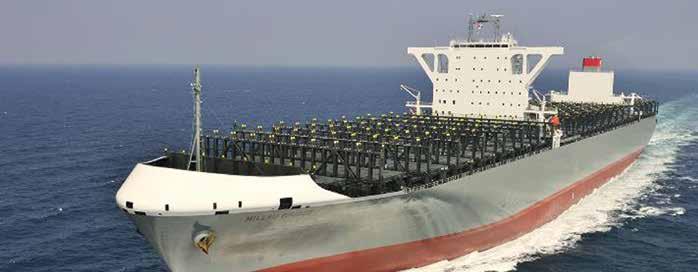
ExxonMobil has introduced its second independently accredited mass flow metering system (MFMS) in Hong Kong onboard the bunker vessel, Anelly
ExxonMobil has introduced its second independently accredited mass flow metering system (MFMS) in Hong Kong onboard the bunker vessel, Anelly. It follows the introduction of the first independently accredited MFMS in Hong Kong fitted on the barge, Anshing. The oil major says the expansion will help to meet increased customer demand for fuel deliveries via an accredited MFMS, due to the cost and efficiency benefits.
Both metering systems are fully accredited by Lloyd’s Register, in partnership with A*STAR’s National Metrology Centre, the national measurement institute of Singapore, and Metcore International, a consultancy with expertise in MFMS for bunkering. ExxonMobil says that, in line with industry best practice, the technology directly measures fuel mass, instead of volume, to provide an accurate measurement for vessel operators. The system’s seals are validated by independent third parties that enhance traceability and help to ensure system integrity.
The oil company claims: “The MFMS provides multiple benefits for vessel operators, suppliers and regulatory bodies. These include enhance accuracy as a result of measuring fuel mass, increased efficiency and reduced uncertainties related to variables including density and temperature.
It can save an estimated US$5,000 and up to three hours per delivery alongside improving transparency as measurement data is logged throughout the process.”
“Our first mass flow metering system in Hong Kong received a very positive response from customers and has proved to be a great success. This second barge will help to ensure the majority of ExxonMobil fuel deliveries will be supplied via mass flow metering and also cater for larger stem sizes,” said ExxonMobil’s Asia Pacific marine fuels sales manager, Deepankar Banerjee.
Japanese shipping company Kawasaki Kisen Kaisha has been recognised by the port authorities of both Long Beach and Los Angeles, for recording high level of compliance throughout 2015 with voluntary speed reduction by its container ships, car carriers and dry bulk carriers in the two ports’ respective programmes.
Ships participating in the program are asked to comply with a speed limit of 12 knots within 40 miles from each port in order to reduce emissions of exhaust gases containing nitrogen oxide (NOx), sulphur oxide (SOx), particulate matter (PM) as well as CO2 from ships. K Line has been recognised by the Port of Long Beach for eleven consecutive years since
2005 and from the Port of Long Beach for eight consecutive years since 2008. In both cases K Line has been recognised for full compliance since each started its slow steaming programme.
The International Organization for Standardization (ISO) has a new standard conceived to measure changes in ship-specific hull and propeller performance, ISO 19030.
According to paint and antifouling coating manufacturer, Jotun, the move has the potential to reduce the industry’s greenhouse gas emissions by 10% while saving operators up to US$30 bn in annual energy costs.
ISO 19030 has been more than three years in the making. It’s seen a collaboration of 53 expert stakeholders from throughout the industry working together to develop a uniform framework for measuring the efficiency of solutions improving hull and propeller performance.
Jotun’s Business Development Director, Hull Performance Solutions, Geir Axel Oftedahl, managed the project. He said: “This is a day of celebration for all stakeholders in, and connected to, the global shipping industry.
Poor hull and propeller performance accounts for around 10% of the world fleet’s energy costs and greenhouse gas (GHG) emissions. With this standard we can finally quantify how solutions, such as advanced antifouling coatings, can tackle that issue – providing accountability and ROI for shipowners, while detailing the enormous potential for GHG and cost reductions.”
Genoil’s massive Russian low-sulphur deal
Canadian-based clean technology engineering company Genoil Inc has signed a $50 bn Letter of Intent (LOI) to develop oil fields and construct clean technology upgraders, refineries and pipelines in Russia. The project will incorporate Genoil’s efficient clean technology hydroconversion (GHU) process, and marks the second time that Genoil will have provided a complete integrated project, from the development of oil fields to the production of cleaner fuels. The scope of the project is to produce 3.5 million barrels per day.
Genoil’s hydroconversion process improves upon the existing data-verified Fixed Bed Hydroconversion technology, which is widely used worldwide. Currently, 85% of all desulphurisation is taking place worldwide via hydroconversion. Genoil’s investment into hydroconversion projects can significantly increase the desulphurisation, demetalisation and denitrogenisation conversion rates, and increase operating efficiencies by 75%.
Genoil will be responsible for the design and construction of six million tonnes per year of new refinery capacity in Chechnya. To achieve this, Genoil will organise a large consortium of Chinese engineering and services companies, with many years of operational experience, to provide all the necessary support and project guarantees. In addition to project guarantees, Genoil will arrange for a leading Chinese insurance company to insure the entire project.
The Genoil Hydroconversion Upgrader is described as being an advanced upgrading and desulphurisation technology, which converts heavy or sour crude oil into much more valuable light low sulfur oil for a very low cost. The Genoil GHU was designed to be versatile, can be placed at many different locations, either upstream at oil fields, or downstream at refineries, in a standalone form at ports and other logistical locations.
World Fuel Services argues the case for a strong counter party Bunker buyers could be at a loss if further bunker collapses happen in the future, without the proper business strategy in place, World Fuel Services (WFS) has warned.
WFS says that the recent London High Court judgment on the Res Cogitans,
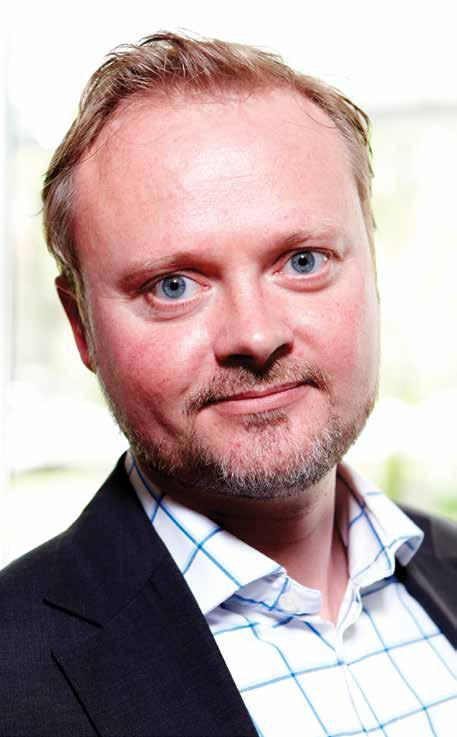

one of the ships that were affected by the OW Bunker collapse, was a key moment for the bunkering industry. The High Court ruled that OW Bunker assignee ING Bank was entitled to be paid the entire bunker bill by the shipowner, leaving the supplier out on a limb. In essence, the court found that because the physical supplier had contracted with OW Bunker, and not the vessel operator, they had no maritime lien to the ship.
According to WFS, this has prompted some in the industry to argue that suppliers should perhaps now look to sell directly to shipowners, so they still have a maritime lien if payment is not made. WFS adds in a statement: “It has also been suggested that buyers should consider establishing more direct relationships with suppliers, so they can avoid the dangers of unknown parties in the supply chain and the prospect of being caught up in another OW Bunker web (and still being stung for double payments if the supplier pursues the case in other jurisdictions).”
“But,” argues WFS, “the example above is not an ideal scenario. Many bunker buyers will be fuelling ships which call at a great many ports - and within these ports they will have to shop around for the best price. They will have to work with people they do not know - and in order to do that they will need a trusted intermediary who does know all the suppliers and the particular nuances of each market,”
The company adds that a global trader can use its global network to build up a knowledge base for ports in every market, with intelligence on all the key suppliers. They will also have the capacity to work across different time zones. A risk management strategy is about identifying and quantifying all the dangers that exist in the market, and developing strategies that will protect a company from the many potential pitfalls.
World Fuel Services advises that before entering any commercial transaction, a company should have a clear understanding of the counterparty that it is transacting with.
Every few years or so, alarm bells will ring in the industry when a big trader, supplier or shipowner goes under, leaving a slick of unpaid bunker fuel bills. In 2016, Hanjin Shipping’s demise caused ripples through the market, and the effects of OW Bunker’s collapse in 2014 is still being felt.
OW Bunker started 2014 promisingly with an IPO (initial public offering) on the Copenhagen Stock Exchange; but by November it filed for bankruptcy, sunk by debts of more than US$1 billion.
WFS says that it is highlighting that the problem for bunker buyers in these situations is that they can find themselves being chased twice for payment on the same fuel delivery: once from the failed trader’s administrators or bank; and again, from the physical supplier. The problem for the physical suppliers is that even if the buyers pay the trader or the administrator, this money may never trickle back to them. The aftermath of the OW Bunker debacle has probably made it even more difficult for physical suppliers to be recompensed for the fuel.
WFS concludes: “Just as buyers will not know all the suppliers they should deal with; the suppliers do not know all the buyers. From the supplier’s perspective, a key benefit of working with a first-rank trader such as World Fuel Services is that they will take on the credit risk of the buyer and pay the supplier directly. World Fuel Services will also use its experience and market intelligence to spot potential credit issues, so problems can be contained and resolved before they spread.”
Global physical supplier and trader Bomin Group has expanded its physical operations in Singapore. From the beginning of October, Bomin has deployed four modern, double-hulled barges in the world’s largest bunkering port. All vessels have fast pumping rates, and can provide customers with a wide range of quality products.
The vessels also have approved Coriolis Mass Flow Meters installed to ensure customers receive the quantity of products they order,
as well as further speeding up the bunkering process.
Bomin says that while it has been a Maritime and Port Authority of Singapore (MPA) approved supplier since 1988, the development of its physical infrastructure in the region will enable the company to deliver greater control of the end-to-end bunkering process, better integrating supply from the terminal to the customer jointly with its sister company, Matrix Marine Fuels.
The managing director of Bomin Group, Thomas Roller, says: “The investment in developing our physical operations in Singapore comes at an important time for Bomin, as the bunkering sector is experiencing significant change. It is vital for us that we ensure our business is structured to seize the opportunities of a changing market, and to help our customers meet the new challenges that they face in relation to fuel supply. This means ensuring that all our operations, resources and infrastructure are geared towards delivering long-term and sustainable growth.
Our investment in Singapore is an example of this.”
Quadrise share offering raises £4.25m
Quadrise Fuels International, the emerging supplier of MSAR® emulsion technology and fuel, enabling a low-cost alternative to heavy fuel oil reports that its flotation in October was significantly oversubscribed and raised gross proceeds of £4.25 m.
Quadrise’s Executive Chairman, Mike Kirk, said: “We are delighted to have received such an enthusiastic response from our existing shareholders to the Open Offer which was 2.5 times oversubscribed. Having raised gross proceeds of £5.25 million from the Placing and Open Offer, Quadrise is now ideally placed to build on the substantial progress made in our key trial projects in the marine and power markets, and implement our plans for the migration to commercial operations during 2017.”

Niels Bjørn Mortensen, who was Director Regulatory Affairs at Maersk from March 2010 until late 2016, talks to Unni Einemo
Niels Bjørn Mortensen has had an illustrious maritime career. The son of a marine engineer, you could say he was born to it. His seagoing career started in 1971 as a deck-boy on a tanker; in 1977 he commenced studies and graduated as Master Mariner. He dropped anchor in 1983 for further studies, and graduated as a Naval Architect in 1987, after which he worked at Burmeister & Wain Shipyard until 1996, when he was employed by BIMCO. During his time with BIMCO, until 2010, he attended 6-10 meetings per year at the International Maritime Organization (IMO), and continued to participate in IMO meetings after joining Maersk.
UE: What has changed in shipping during your career, and what have been the man drivers of change?
NBM: The main driver of change has been the enormous environmental awareness by the public in general. When I started my career on tankers in 1971 is was standard practice to clean the oil cargo tanks with hot water and pump it all overboard. Oil spills on deck were also just washed overboard. Although the IMO’s MARPOL Convention was triggered by the “Torrey Canyon” accident in the English Channel in 1967 it was not adopted until 1973.
As with most IMO instruments, MARPOL has demonstrated its efficiency in that oil spills from ships have fallen dramatically over the last 30-40 years.
In 1997, after years of heated debates, MARPOL Annex VI on air pollution was adopted. It was seriously amended in 2008 and just recently the final clarity was provided when MEPC 70 decided on 2020 as the implementation date for the global 0.50% sulphur cap.
I’d suggest that shipping has also demonstrated an ability to absorb increasing costs by passing them on to the end customers. During the two oil crises in 1973 and 1978 the fuel prices increased by a factor 10, from USD 20/t to USD 200/t, but it did not stop shipping. Conversely it inspired shipping to be innovative in saving fuel and many ships were converted from steam turbines to diesel. Also slow steaming became the norm in the early 1980s. Later speed increased again, but that’s a different story.
UE: Do you think Maersk, due to its huge buying power, is less affected by some of the main bunkering concerns and issues shipping companies come up against than smaller operators?
NBM: There is little doubt that a company like Maersk with its size and amount of fuel purchased has more clout than a single-ship operator. Maersk is, however, also subjected to quality and quantity issues, but perhaps not to the same degree as smaller operators. Maersk is after all a very frequent customer in all the major bunkering ports.
UE: Can you tell us how Maersk will prepare for the 0.50% sulphur cap in 2020? Will scrubbers be part of the solution?
NBM: I would suggest that a company like Maersk will leave no stones unturned, but much will depend on the price gap between compliant 0.50% fuel (whatever that will be?) and HFO, which can be used in combination with a scrubber.
On-board blending might also be an option under Regulation 4 of MARPOL Annex VI, but will likely require some gadget to demonstrate compliance.
While I worked for Maersk they did not find scrubbers to be a very attractive solution. Retrofitting a scrubber on an existing containership is not only challenging, but may seriously cut into the cargo carrying capacity.
UE: What do you think about new fuels such as LNG, methanol, and bio-diesel for ships?
NBM: LNG is a difficult fuel from an operational viewpoint. It also requires special tanks, pipings, valves, etc. Finally, it requires specific training of the ships’ crews. It is, however, a very clean fuel which will solve the SOx issue. On 4-stroke engines it will also generally solve the NOx Tier III problem, whereas on 2-stroke engines some after treatment will be required to reach Tier III. Methanol is probably easier to handle as it is liquid at ambient temperature. There are other challenges, though, as methanol is both toxic and corrosive.
Bio-diesel is very likely to become an important marine fuel of the future as it is considered CO2-neutral. If shipping is to de-carbonise by 2050, as agreed for the rest of world in the Paris Agreement from COP 21 in 2015, bio-fuels and nuclear power are presently the only means to meet that end. Some years ago Maersk Line tested some third generation bio fuel based on algae. The quality was comparable to the best MGO, but the price at that stage was like a factor 50 to MGO.
UE: Sufficient availability, product quality, cost, and effective enforcement are some of the concerns raised about the global sulphur cap in 2020. What are your main concerns?
NBM: I’d suggest the biggest challenge will be the transition from HFO to 0.50% compliantfuel. The change cannot be made overnight from 31 December 2019 to 1 January 2020, so some latitude from the enforcement bodies will be required. It could e.g. be in the form of Fuel Oil Non Availability Reports whereby a ship documents that it has exercised due diligence in trying to obtain compliant fuel, but to no avail. I cannot believe that the greater society will accept a full, or even a partial, stop of world trade until such time when compliant fuel is available in each and every port worldwide.
The quality of new hybrid fuels will be an issue although experiences with the new ECA fuels are quite positive. One concern is that even though the individual hybrid fuel burns well in the engine, there have been examples of hybrid fuels causing problems when commingled.
Finally, there is the issue of enforcement on the deep sea. Even if an instrument like Continuous Emission Monitoring System (CEMS) were to be installed in all ships, there are still the legal questions of who can pursue and sanction noncompliance. It is basically the obligation of the flag state and it begs the question whether all flag states have the resources, or indeed a genuine interest, in sanctioning its own customers?
I am not so concerned that big blue chip companies, like the large container or Ro-Ro operators, will be involved in organized non-compliance in order to save fuel cost. The reputational risk will be too great. Tankers operated under any contract with the oil majors are also highly unlikely to be non-compliant. While there might be other sectors where the temptation to increase the profit by burning cheaper oil will be more obvious, it must be noted that deliberate and organized cheating will be quite complex and involve several entities.
False logbook entries and falsified BDNs are possible ways to make things look perfectly OK to a PSC inspector, but the risks of such actions are great. In the US, in particular, such fraud can result in million dollar fines, several years of imprisonment of key crew members and, in repeated cases, the company may be banned from trading to USA.
UE: Reducing GHG is the ‘next big thing’ affecting shipping and fuel consumption. Is there much more scope to address this through improved energy efficiency, or will we see further measures such as MBMs being imposed on shipping? If so, what do you think would be most effective; a CO2 limit with an ETS, a bunker fuel/ CO2 levy or something else?
NBM: As mentioned above a global agreement was made after COP 21 in Paris last year which aims at a decarbonised world by 2050. This will mean intense focus on renewable energy like solar, wind and hydro, where that is applicable. The development in battery technology is on an exponential curve and it is believed that road transport will be battery driven a few decades down the road.
Shipping will be challenged as even if all known energy efficiency gadgets are applied to ships, they will not completely remove the carbon footprint. The apparent option for shipping in the short term will be to increase efficiency within the physical constraints possible and then purchase carbon credits from sectors which have successfully decarbonised via an ETS (Emission Trading Scheme) or a levy. In the longer term such schemes are bound to be phased out and shipping’s options will be limited to burning bio fuels and, to a limited extent, use nuclear, where possible.
UE: We have seen the EU push ahead of IMO in regulating shipping emissions, and the US do the same regarding ballast water. This has led many to say that politicians don’t understand shipping and fail to understand of the importance of global regulations. What’s your view?
NBM: It is unfortunately true that many politicians in both Brussels and Washington are very focused on pleasing their constituents by proposing special rules which will apply in their neighbourhood, thereby ensuring them re-elections. It is sad that, apparently, many of them are hardly trying to comprehend the importance of global regulations for what indeed is the most global business of all.
It must, however, be acknowledged that it is the prerogative of sovereign states and regions to propose any legislation they feel fit as long as it at least as stringent as the international rules having been adopted by that state/region. Having said that, it is important to distinguish between the civil servants writing the regulations and their lords and masters sitting in Parliament/Council or Senate/ House who are approving the text. I have been closely involved in the EU Commission’s development of the MRV Scheme and everybody involved from the Commission agrees that a global scheme is preferable. In spite of that there are, at the time of writing, still some parliamentarians who are working hard to have shipping included into the EU ETS. If successful this will not only undermine the EU MRV but to a certain degree also the IMO efforts in regulating CO2.
UE: What do you think of IBIA? Does it sufficiently represent the views of bunker buyers?
NBM: I have known IBIA since before it became an IMO NGO. I believe the IMO acceptance came in connection with the anticipated revision of MARPOL Annex VI where it was believed that IBIA could contribute. IBIA was indeed a member of the Expert Group established in 2007 by the IMO Secretary General to prepare the facts and figures needed for the amendments. I would suggest, though, that most people (at least in IMO) consider IBIA as representing bunker traders and bunker suppliers more than representing bunker buyers.
Irrespective, IBIA is having a voice in IMO and albeit not all proposals are immediately agreed to, it is acknowledged that IBIA holds information and experiences which most delegations could benefit from.
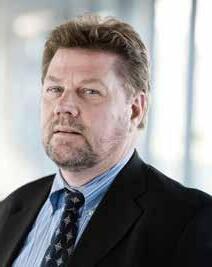
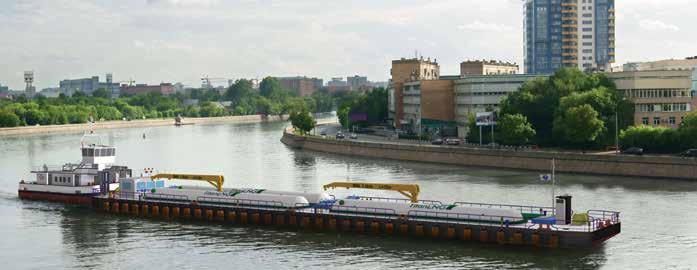
While a considerable amount of effort is now going into developing LNG barge designs there is still a market for very simple HFO and MGO barges
LNG barges are by their nature complex vessels and several designs are under development.
Japanese classification society ClassNK has issued Approval in Principle (AIP) for a 7,500 cu m LNG bunkering vessel designed by Korea’s Hanjin Heavy Industries & Construction. The classification society says the “revolutionary design” is the result of joint research carried out by itself and Hanjin to improve the efficiency of LNG bunkering vessels.
In a statement ClassNK says that the choice of LNG as ship fuel has become increasingly prevalent in the industry, and is expected to become one of the main marine fuels in the near future. However, it says, LNG fuelled vessels are currently largely dependent on existing infrastructure comprised mainly of fixed bunker locations, potentially limiting their operations.
The innovative design employs type-C bi-lobe tanks, increasing cargo capacity to achieve greater efficiency and productivity. The AIP was granted after the design was confirmed as complying with ClassNK’s Rules and Guidance for the Survey and Construction of Steel Ships.
This AIP allows the design to be considered for further individual projects,
where tests on the hull structure scantling and direct stress analyses will be carried out to ensure the structural integrity of each specific design is in line with class rules and the International Code for the construction and equipment of ships carrying liquefied gases in bulk (IGC Code).
Hanjin Heavy Industries’ Technical Director, Cha-Soo Lee, said: “When we are commissioned to develop an LNG bunkering vessel concept by clients we face a much wider array of challenges, such as compact ship’s dimensions, robust hull structure, more cargo capacity, simple operation and lower ship’s price etc. We are happy to find the best compromise between economic and technical issues through this joint research with ClassNK.”
Meanwhile Titan LNG, a major LNG supplier to the marine and industrial markets in North West Europe, is developing a new, innovative solution for the safe delivery of LNG to both sea-going and river barges in ports in the ARA (Amsterdam – Rotterdam – Antwerp) region, Europe’s largest bunkering hub.
In a statement the company says: “Following rigorous research and development, and based on its
knowledge and experience in the bunkering and LNG sectors and based upon tried and tested technology, Titan LNG has designed and developed the first LNG bunkering pontoon in North West Europe, the Titan LNG Flex-Fueler.”
The new pontoon is designed to normally supply inland waterway vessels from a fixed location, but can also be taken by pusher tug to large sea-going vessels and safely supply LNG while they load or discharge cargoes.
Titan LNG says that, by being able to undertake two roles, its Flex-Fueler minimises costs and maximises operational efficiencies, “while unlocking access to safe and quick LNG delivery in the key ARA region”. The company says the pontoon is currently more economical than conventional LNG bunker barge delivery due to its low Operational and Capital expenditure (CAPEX and OPEX) requirements.
Titan LNG’s Commercial Director, Niels den Nijs, said: “It is critical that LNG bunkering infrastructure is developed to facilitate the efficient, cost effective, and safe delivery of LNG to both large and small LNG-fuelled vessels. Currently, truck-to-ship delivery provides the most flexibility, and is the only means of receiving LNG bunkers in the ARA region.
However, there is an increase in larger LNG-fuelled vessels coming into the market, which cannot bunker at landbased LNG stations, as the deviation costs are too high or is simply not an option due to draft restrictions. The feedback that we have received from customers, ports and class societies has convinced us that Titan LNG Flex-Fueler is the missing link to safe, economical and speedy LNG delivery in the ARA region.”
He continued: “The Titan LNG Flex-Fueler can act as a catalyst for a substantial increase in demand for LNG conversion –with current retrofitting costs decreasing as tanks and cryogenic equipment become cheaper due to economies of scale. We are working with other industry stakeholders, including ports, ship owners and operators as well as class to further develop the design and classification of the Titan LNG Flex-Fueler bunkering pontoon in advance of its official launch in Q1 2018.”
The 70 metre-long vessel has a double bottom and double sides and will be fitted with up to four tanks, each with a capacity of 300 cu m. Two cranes will be used for flexible hose handling, and it can discharge at between 30 cu m and 450 cu m of LNG per hour.
It can load and discharge at a wharf, to or from a truck or alongside a vessel.
On the economic viability of the design, Titan LNG says: “The shipping industry is seeing an increase in demand for LNG and bunkering infrastructure in line with MARPOL Annex VI regulations that stipulates the requirement to burn clean fuel (with a sulphur content of less than 0.1%) in Emission Control Areas (ECA’s). A global 0.5% sulphur limit could be implemented as early as 2020. With the price of crude predicted to rise to US$55 per barrel from mid-2017, the return on investment (ROI) in switching to LNG is reduced to less than five years. The ROI will further accelerate as the global 0.5% sulphur limit is implemented in 2020, in conjunction with crude prices climbing to between $60 and $80 per barrel. This will act as a catalyst for a substantial increase in demand for LNG conversion, as new build and retrofitting costs are decreasing”
While much interest is focused on LNG bunkering, Dutch shipbuilder Damen is experiencing strong demand for very basic dumb bunkering barges. By October Damen had sold 10 such units, as well as small pusher tugs to move them.
A Damen spokesperson told World Bunkering: “Technically the barges are quite simple, designed with a focus on production and ease of use. The pipes run on deck because it is easier to produce and if necessary to repair. There are various configurations and velocities of the cargo transfer system that are possible on these barges which are designed to take their power supply from the tug to operate the pumps. Two 250 cu m tanks can be filled or emptied at the same time.”
The barges have an overflow tank and high-level alarms are fitted. The barges can be towed or pushed while the ballast system allows the barge when empty to be low enough in the water to pass under low bridges.
Damen says that its focus on standardisation, modular construction and holding vessels in stock leads to short delivery times, low ‘total cost of ownership’, high resale values and reliable performance.
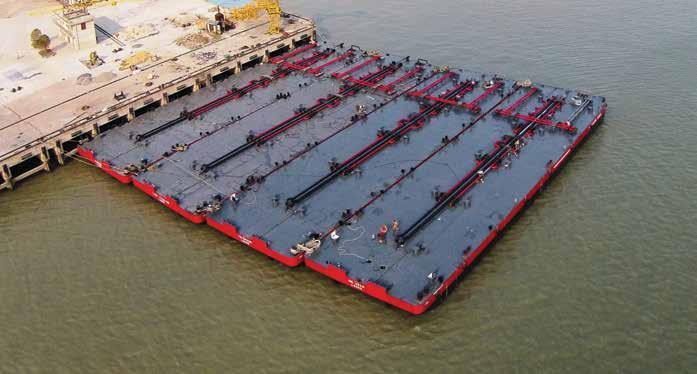

After nearly a decade as our representative at IMO, IBIA bids John a fond farewell
NNon-governmental organisations (NGOs) with consultative status at the International Maritime Organization (IMO) have both a right, and a duty, to attend relevant meetings and keep a finger on the pulse. IBIA keeps an eye on proceedings at the IMO to keep its members informed, and has fought a few battles. For the best part of the past decade, this duty has been in the capable hands of John De Rose as IBIA’s nominated Accredited Representative to the IMO. As of October 2016, however, six months after she was employed by IBIA, Unni Einemo inherited that role.
John will be a tough act to follow. Having just turned 70, he has a lifetime’s experience in the maritime sector. A naval architect, he started his career with the Ministry of Defence before becoming a surveyor for Lloyd’s Register for 20 years. Thanks to previous NGO engagements at the IMO, having represented the International Association of Classification Societies (IACS) since 2000, he knows the Organization’s way of working better than most. Softly spoken, but with a steely edge, he has a quiet authority about him and the kind of confidence that only comes with experience.
Part of that experience is knowledge of just how difficult it is to build a reputation at the IMO, and even more challenging to influence outcomes. “It was always frustrating to note that many smaller flags had an innate distrust of IBIA members. I faced the same problem with IACS in the early days but that has moved on,” John observes. “My main aim was to provide IMO with recognition of IBIA attendance and interest in all IMO activities. I also was careful to ensure that we were able to follow matters in the sub-committees as well as the committees.” The most important committees, according to John, are the Maritime Safety Committee and the Marine Environment
Protection Committee, while the sub-committees he paid most attention to were PPR (Pollution Prevention and Response), HTW (Human Element, Training and Watchkeeping) and CCC (Carriage of Cargoes and Containers). He also attended Council and Assembly; the latter happens every two years and is the time for networking and choosing the pertinent receptions for IBIA’s interest. John would monitor all these meetings and provide a report to IBIA afterwards.
John says that during the time he represented IBIA there were very few clear wins, but he did participate in lots of debates about the new bunker delivery note format, and he followed and reported on the sulphur limits discussions and decisions. He also took part in trying to prevent a ban on blending of cargoes at sea, which threatened to make elements normal offshore bunkering activities illegal under international regulations. “I tried to get them to exclude blending on bunker barges but they concurred that it was not meant to cover them - only blending of cargoes on tankers. The regulation was not changed to exclude bunker vessels but it can be implied in the regulation,” John explains.
During his time representing IBIA at the IMO, John enjoyed learning about fuels and their impact on the industry, and beginning to understand where bunker affairs fit in with respect to SOLAS and MARPOL, which is why his reports from the meetings included matters beyond just the obvious.
His advice for his successor at IMO meetings is “to take care to only intervene on matters that will affect your members - and support other industry NGO’s for the same reason. It is not always during plenary or the working groups that it matters but also during other periods of the day.”
IBIA is grateful for John’s steady hand over the years and for the insights and knowledge he has shared. We wish him a long and happy retirement and hope to rub shoulders with him at the IMO for a several years still, as he continues to attend meetings on behalf of the Royal Institution of Naval Architects, which with his background is the perfect NGO to benefit from John’s experience.
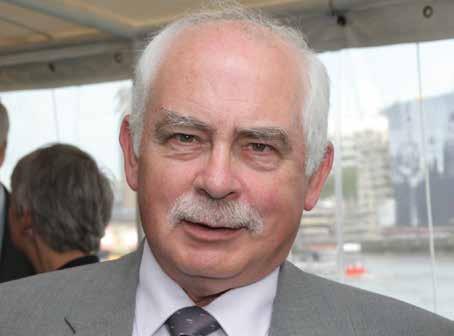

The IMO decision on the global sulphur cap is clear, but will it be able to see it through perfectly?
Unni Einemo reports on this, and other relevant outcomes, from MEPC 70
We finally have the International Maritime Organization decision we have been waiting for. On October 27, IMO’s Marine Environment Protection Committee agreed to implement the global 0.50% sulphur limit in 2020. If you have followed IBIA’s preparations for that crucial IMO debate, you will know that we presented a paper to MEPC 70 outlining challenges with implementing such a dramatic global change on a specific date, as opposed to over a period, and proposed a phased introduction to smooth out some of the inevitable market upheaval.
Although many saw sense in a phased approach, MARPOL Annex gave a choice between two dates, and there was no appetite for changing that. IBIA did, however, succeed in raising awareness of the transitional challenges. MEPC 70 agreed that work will begin to identify ways of addressing them, and tasked the Sub-Committee on Pollution Prevention and Response (PPR) to develop a plan for effective implementation.
PPR 4, which meets in mid-January, will have its work cut out. Several unknowns remain. Will refiners produce sufficient compliant marine fuels, and what will these fuels look like? Can the powers that be ensure compliance, and how will the IMO tackle transitional issues?
The conclusion of the official availability study by CE Delft, which was the basis for IMO’s decision to implement the 0.50% limit in 2020, makes several big assumptions that may be overly optimistic:
• It assumes refinery capacity to produce sufficient low sulphur fuels will translate into refineries actually producing fuels for the marine sector. We don’t know if that will be the reality because it will depend on refiners’ analysis of which markets offer them the best profit margins on their output.
• It assumes sufficient volume will be available from day one in 2020, not taking into account the issue of the massive ‘switch volume’ which means the transition cannot happen overnight.
• It assumes that all the theoretical 0.10% to 0.50% sulphur fuel blends will be suitable for marine engines. That has been questioned by International Organization for Standardization responsible for the ISO 8217 fuel quality standard, IBIA and others.
The official availability study states that it is expected that refineries across the world will go through a product technology development process to ensure the low sulphur marine fuels perform appropriately. Indeed the market will try to produce appropriate and safe to use fuels, as we have seen with the new fuel formulations introduced to the marine fuels market for the 0.10% limit in emission control areas (ECAs). But these ‘new’ fuels only make up a small share of overall 0.10% fuels as the majority of vessels use traditional DMA-grade MGO, which was already widely available. The introduction of these novel fuels has been gradual in geographically limited areas. Doing this on a global scale is a completely different ball-game and it will take time to ensure the blends perform well. Unfortunately, there is little incentive to burn 0.50% fuels until 2020, which gives little opportunity to gain experience with these fuels in the gradual way has been the case with the new ECA fuels so far. Refineries across the world may struggle to provide sufficient tried and tested blends that both perform appropriately and meet all safety requirements from day one, so it seems unlikely that compliant fuel will be available at all times in all locations in 2020.
Some think availability won’t be a big problem in 2020 due to widespread non-compliance. Whether this noncompliance is involuntary, due to lack of compliant fuel, or deliberate to save cost, it could create an uneven playing field.

So the question the IMO has try and find and answer to between now and 2020 is how to handle the transition from the global 3.50% sulphur limit to 0.50%. On the one hand, we should avoid penalising ships due to genuine shortages of compliant fuels, and on the other, avoid a situation where it pays to avoid complying because of lacking checks and balances.
Several countries told MEPC 70 that they would not have sufficient refining capacity to offer compliant fuels to ships in 2020. It has also been suggested that bunkering patterns could change as ships gravitate toward ports that can most readily provide compliant fuels. If this is the case, regional imbalances in availability of compliant fuels could create bunker market “winners and losers”. The losers would be those countries, ports and companies that are unable to maintain supply of compliant fuels, thereby losing sales volumes. The winners would be those countries, ports and companies that either have compliant fuel readily available from local sources, or that are able to adapt their cargo imports and infrastructure to maintain or even gain sales volumes.
For those playing their cards right, the 0.50% sulphur cap coming in 2020 could present great opportunities and give them a winning hand, especially if they are able to provide compliant fuels at competitive prices relative to other bunkering ports.
There is, however, a joker or two in the pack. MARPOL Annex VI has a fuel oil non-availability clause, stating a ship “shall not be required to deviate from its intended voyage or to delay unduly the voyage” in order to obtain compliant fuels. This is a situation that may occur quite frequently in 2020 and possibly beyond. The question is whether ship operators are happy to use this clause and lift non-compliant fuels in ports with frequent shortages or even no availability of compliant fuels, or if they will do their utmost to take most of their bunkers in ports with reliable availability of compliant fuels. There’s also doubt as to whether all ships will comply at all times when operating on the high seas if there is no risk of getting caught or penalised. These jokers in the pack could impact the balance between bunker market winners and losers, at least in the short term.
Guidelines for taking samples from ships to verify compliance with MARPOL sulphur limits were approved at MEPC 70 and look set to be adopted at MEPC 71, although some reservations remain regarding the safety of personnel involved when collecting a representative sample.
MEPC 70 also heard a proposal from Norway to gradually phase in a requirement for ships to have designated fuel sampling points. “We believe this would strengthen and contribute to a harmonized enforcement of the sulphur requirements,
facilitate the work of the personnel that would draw the fuel oil samples, ensure that representative fuel oil samples are taken in a cost-effective and safe manner, and will reduce the likelihood of any disputes following a test that shows the use of non-compliant fuel oil,” Norway’s paper said.
There was support for Norway’s proposal from several member states, in particular as it would facilitate compliance checks when the global sulphur cap takes effect.
Several shipping organisations, however, objected to the very principle of formalising a system to take samples from ships to check for sulphur compliance as they believe such sampling should only be done if there is compelling reason for suspecting non-compliance. It was also stressed that any cost arising from sampling and testing fuels for compliance, instigated by port State control officers, should not be charged to shipowners.
IBIA is inclined to support Norway’s proposal. Apart from addressing the safety concerns raised on several occasions, there would be a clear benefit for both the ship crew and ports State control officers to have a designated sampling point, providing the location is appropriately chosen to give confidence that the sample will be representative of the fuel in use. The proposal will be sent to a future PPR meeting for development and to the Sub-Committee on Ship Systems and Equipment (SSE) to consider the safety aspects.
Reducing fuel consumption Annex VI doesn’t deal only with reducing air pollutants like sulphur, particulate matter and nitrogen oxides (NOx). It is also the instrument for trying to reduce shipping’s carbon footprint, and the pressure for IMO to respond effectively to this challenge is growing. The IMO’s first step was the mandatory Energy Efficiency Design Index (EEDI) regulation requiring new ships to be built to increasingly tight energy efficiency standards. Phase 1 started in 2013, and there have been calls for tightening the phase 2 requirements, starting in 2020, following data and studies suggesting several ship types, in particular container ships, are already meeting or even doing better than these standards.
Although there was significant support at MEPC 70 for amending phase 2, at least for some ship types, shipping organisations fought against it, suggesting the industry was being punished for over-performing and that the industry should not be hit with “a moving target”.
Instead, the Committee agreed on the need for a thorough review of EEDI phase 3 requirements, potentially implementing it earlier and maybe introduce a phase 4. At present, Phase 3 is due to start in 2025 and requires new ships to be 30% more energy efficient compared to the baseline.
As IMO works on moving further, MEPC 70 formally adopted a mandatory fuel consumption data collection system, expected to start on 1 January 2019, and agreed on a ‘roadmap’ for its strategy to control greenhouse gas emissions from international shipping. The roadmap is intimately linked with a previously agreed three-step approach starting with the fuel consumption data collection, to be followed by data analysis (phase 2), forming the basis for policy decisions (phase 3).
However, due to the pressure on IMO to respond the Paris Agreement the first strategy should be adopted in early 2018, to enable the IMO to report its initial strategy to UNFCCC in late 2018.
That is when the Parties to the Paris Agreement will take stock of the collective efforts and inform the Conference of the Parties (COP) on the preparation of “nationally determined contributions”.
To bridge the gap between the Third IMO GHG Study and the initial results of the mandatory fuel consumption data collection, the ‘roadmap’ includes a plan to carry out a Fourth IMO GHG Study for the period 2012 to 2018. That study is expected to be initiated in 2019 and submitted to MEPC in the autumn of 2020, when phase 2 of the three-step approach (data analysis) is set to start.
The strategy to be adopted in 2018 will contain a list of possible short, mid-, and long-term measures, to be revised as appropriate as additional information becomes available. The roadmap envisages the adoption of a revised strategy in 2023 based on analysis of three years of data from the data collection system.
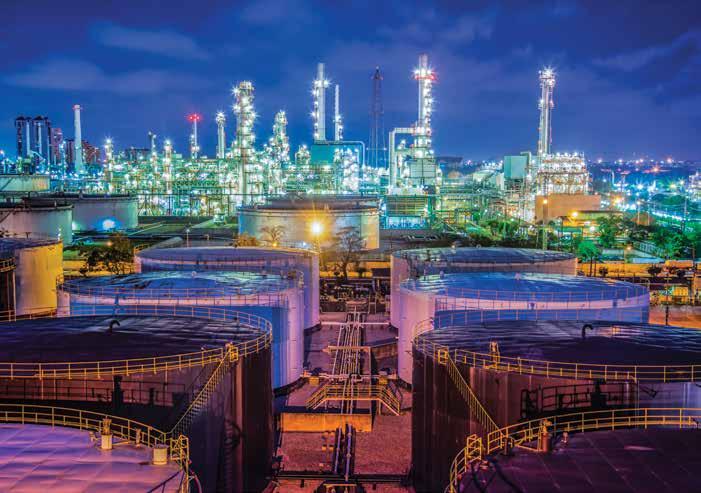
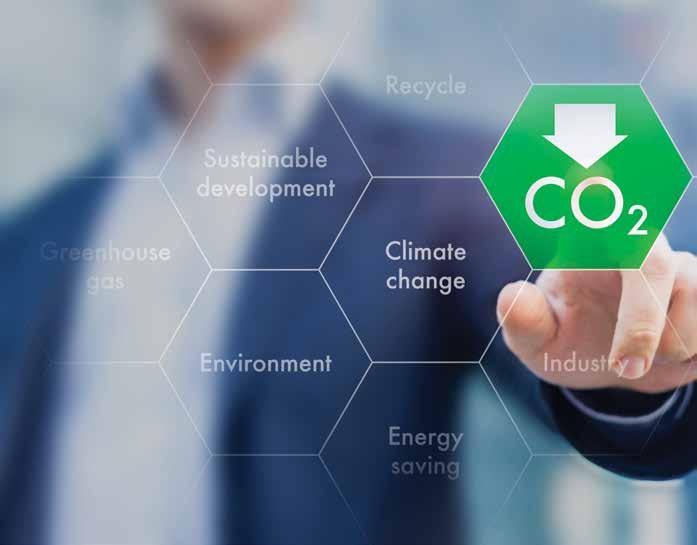
It will be possible for states that are party to the Ballast Water Management (BWM) Convention to grant exemptions for vessels operating within specific geographical areas from the requirement to manage ballast water under the same risk area (SRA) concept.
As previously observed by IBIA, such exemptions may benefit bunker tankers that operate in more than one country, but within a limited geographical range, if those coastal States agree to delineate a “same risk area”. This would require the coastal States to demonstrate, based on a systematic and scientifically sound process, that there is no risk of vessels operating within the SRA spreading invasive species.
As far as IBIA knows, no SRAs have as yet been formally agreed, but Denmark and Sweden are working on it, and Singapore has been undertaking studies on potential SRAs with neighbouring countries.
The SRA concept would allow coastal States to grant exemptions to a group of ships operating within the SRA rather than on a ship-by-ship basis,
thereby easing the administrative burden for both shipping companies and Administrations.
The BWM Convention will enter into force on 8 September 2017. Under the terms of the Convention, ships will be required to comply with the ballast water performance standard (D-2), which in practice means they will need to install a ballast water management system (BWMS).
Details of the BWM Convention, which has been a headache for the industry and regulators for many years, were discussed and progressed during MEPC 70.
MEPC has previously agreed that the requirement to meet the ballast water performance standard will be phased in over a period of time to make the transition more manageable, meaning existing ships will not need to comply with the D-2 standard until their first renewal survey following the date of entry into force of the Convention. In practice, if a vessel has had its renewal survey just before the BWM Convention enters into force it could be up to five years before it is required to have its next renewal survey and meet the D-2 standard.
MEPC 70 discussed a proposal for alternative draft amendments which would allow for compliance by the second renewal survey in certain circumstances. It was agreed that the alternative proposal would be debated at MEPC 71.
IMO never rests, and IBIA strives to keep tabs on the decisions that are likely to touch on the bunker industry in some shape or form. To this end IBIA attends and monitors several of its committee and sub-committee meetings, and tries to influence where we can. As I write, IBIA is considering how we may contribute to achieving sensible and workable ways to implement the global cap during deliberations at PPR 4. IBIA is also hoping to contribute positively to industry efforts to present a future MEPC session with “best practice” guidelines for bunker suppliers.
IBIA hopes its members will support these efforts by contributing their expertise. This is what IBIA is all about; helping you - our members to help yourselvesby being your conduit to the IMO.

The additive providers are responding to the needs of the market as shipowners switch to distillates or ULSFO while in ECAs
Fuel additives are now available for a wide range of purposes and World Bunkering asked two suppliers whether issues arising from switching fuels to meet sulphur limits within Emission Control Areas (ECAs) could be tackled using additives.
Sachin Gupta, Business Manager, Oil Solutions, Wilhelmsen Ships Service said: “Incremental product improvement and innovation are core to WSS and we regularly invest in such activities as both our customers’ needs and market trends are constantly changing.”
He added, “With regards to ultra-low sulphur fuel oil (ULSFO), we have not seen mass market adoption due to availability issues, so the data available is very minimal and limited to pick out trends and issues that can be solved. However, what we have seen is that there are cases whereby there are incompatibility issues with HFO and ULSFO resulting in sludge generation. This can be resolved by using product such as our FuelPower conditioner that is formulated to keep fuel stable and resolve compatibility issues. This needs to be done as a proactive approach, rather than a reactive one.”
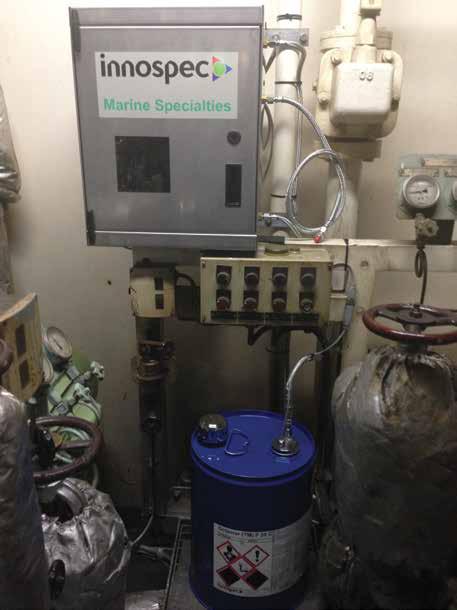
Mr Gupta noted: “Our data and from other industry experts suggest most of the market has adopted marine gas oil/marine diesel oil (MGO/MDO) as a viable solution, so ship operators are running ships on HFO at high seas and switching to MGO/MDO in ECA areas. WSS has a range well suited to resolve the challenges that come with such fuels.”
More generally Mr Gupta thought ship operators were becoming more inclined to use additives. He remarked: “Fuel oil additives are gaining traction as there seems to be a changing shift in customer’s mind-set, but there still is a long way to go. On the other hand the fuel additive manufactures have to do their bit in educating the customer on real benefits, rather than making false claims which was frequently done in the past.”
Meanwhile additives manufacturer Innospec says it has reviewed statistics from the French Ministry of Environment
(Maritime Affairs Directorate) which “show alarming increase in fuel related propulsion loss incidents”.
The company says that the English Channel, the narrow and yet among the busiest shipping lanes in the world, saw a twofold increase in loss of propulsion incidents in 2015 compared to the previous 4 years.
According to Innospec this suggests that many of these incidents were related to fuel changeover issues due to the 0.10% sulphur limit enforced from 1 January of that year. It points out that changing over from HFO to MGO “raises a clear compatibility risk.”
Since January 2015, the demand for MGO as fuel for shipping has risen dramatically, leading to increased onboard storage requirements. This means MGO is generally more exposed to ambient conditions,
increasing the risk of the fuel solidifying at low temperatures. As demand for MGO rises, fuel quality is changing, and fuels with poor cold flow properties are now alarmingly commonplace in the market. In recent cases, MGO fuels have been known to solidify at temperatures exceeding +20°C, posing a significant risk to the safety of vessel and crew, with propulsion loss and even failure of emergency equipment.
The company says use of its Octamar BT-25, and Octamar LI-5 Plus products, in HFO and MGO respectively, mitigates issues when changing over or comingling different fuel types. The company says: “The stabilising properties of these highly versatile products have been demonstrated to work well in residual, distillate and hybrid fuel mixes. Operators using these products specifically for this, and other reasons, have reported no compatibility issues when transiting ECAs.”


The latest prosecution of a shipowner, ship manager and senior engineers by US law enforcement authorities for oil record book offences has also revealed systematic theft of the ship’s bunkers
AUS federal jury in Greenville, North Carolina, has convicted two Greek shipping companies and two engineers of pollution crimes and obstruction of justice. The companies face heavy fines and the engineers the prospect of long prison sentences. In an unusual twist it emerged in court that the reason the engineers discharged contaminated water over board from the mutli-purpose ship Ocean Hope was that they were using the designated sludge tank to store stolen bunkers.
Oceanic Illsabe Limited, Oceanfleet Shipping Limited and the two engineers were charged with violating the Act to Prevent Pollution from Ships (APPS), obstruction of justice, false statements, witness tampering and conspiracy.
Oceanic Illsabe owns the Ocean Hope, a large cargo vessel that was responsible for dumping tons of oily waste into the Pacific Ocean last year.
Oceanfleet Shipping Limited was the managing operator of the vessel. Both companies operate out of Greece. Also convicted at trial were two senior engineering officers who worked aboard the vessel, Rustico Ignacio and Cassius Samson. The jury convicted on each of the nine counts in the indictment.
Should any overboard discharges occur, they must be documented in an oil record book, a log that is regularly inspected by the US Coast Guard. The evidence presented to the jury showed that in June 2015, the vessel discharged around ten metric tons of sludge into the ocean. The vessel was also regularly pumping contaminated water directly overboard. None of these discharges were disclosed as required.
The evidence presented during the nine-day trial demonstrated that the companies were aware that the ship had not offloaded any oil sludge from the vessel since September 2014 and that the ship rarely used its oil-water separator. Instead, the vessel’s second engineer, Samson, ordered crew members to connect what is known in the industry as a “magic pipe” to bypass the vessel’s oil-water separator and pump oil sludge overboard. In addition, crew members were ordered to pump oily water from the vessel’s bilges directly into the ocean up to several times per week. The dumping occurred with the knowledge and approval of the ship’s chief engineer, Ignacio. The two engineers used a tank designated for oily wastes to store diesel fuel for sale on the black market.
Upon arriving at the Port of Wilmington, Oceanic, Oceanfleet, Ignacio and Samson attempted to hide these discharges by presenting a false and fictitious oil record book to US Coast Guard inspectors. When inspectors uncovered evidence of dumping, the defendants ordered lower-level crew members to lie to Coast Guard personnel. Samson also made several false statements to a Coast Guard inspector regarding the bypass of the oil-water separator.
At the conclusion of trial, defendants Oceanic and Oceanfleet were convicted of one count of conspiracy, one count of violating APPS, two counts of obstruction of justice, one count of false statements and four counts of witness tampering. Ignacio was convicted of one count of conspiracy, one count of violating APPS, one count of obstruction of justice and two counts of witness tampering. Samson was convicted of one count of conspiracy, one count of violating APPS, two counts of obstruction of justice, one count of false statements and three counts of witness tampering. The companies could be fined up to $500,000 per count, in addition to other possible penalties. Ignacio and Samson face a maximum penalty of 20 years in prison for the obstruction of justice charges.
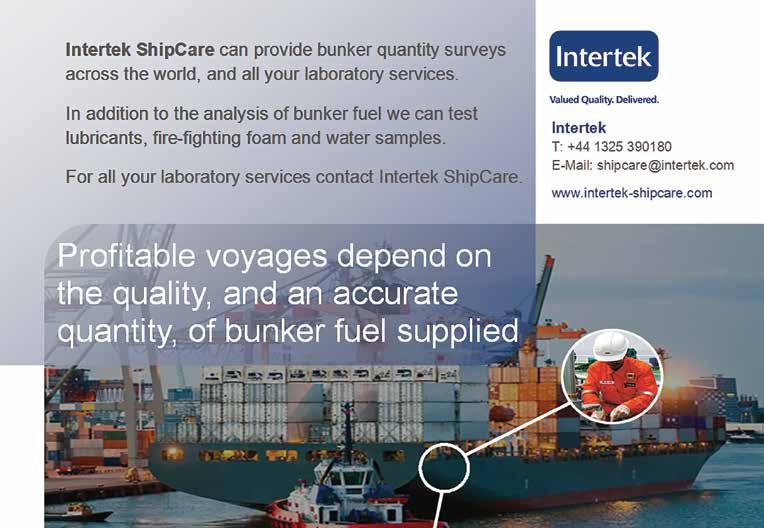

Bunkering company TransOilBunker Co., Ltd 53 of., st. Aleutskaya 11, Vladivostok, 690001, Russia
Tel: +7 (423) 2642-449
Tel/Fax: +7 (423) 2642-448
Tel/Fax: +7 (423) 2610-537 Mobile: +7 914 704 2856 E-mail: bktob2006@yandex.ru
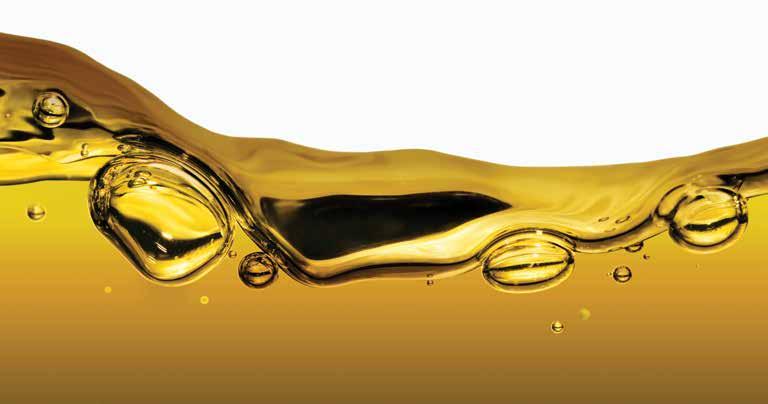
We supply vessels with the following oil products: MGO / IFO-30 / IFO-120 / IFO-180 / IFO-380
bunkering in the ports of: VLADIVOSTOK / NAKHODKA / VOSTOCHNY / SLAVYANKA / ZARUBINO / POSIET / KOZMINO

Gazprom and Mitsui & Co to investigate LNG bunkering
At a recent meeting in Vladivostok, Alexey Miller, Chairman of Gazprom’s directorate, and Masami Iidzima, Director Representative, Chairman of Mitsui & Co’s board of the directors explored potential areas of cooperation.
In particular they discussed increasing LNG production from the Sakhalin-2 project to provide supplies to Japan. At the moment two production LNG lines operate at the plant at full capacity, producing about 10 million tons of LNG a year. The construction of the third line is planned to be completed by 2022.
The two chairmen signed a Memorandum of understanding on a joint feasibility study and analysis of the marine LNGbunkering market in the Russian Far East and Asia-Pacific region.
“Gazprom and Mitsui have experience of successful cooperation in the framework of Sakhalin-2 project. Now we have got a good opportunity to develop a new aspect of partnership in a segment of low tonnage LNG. Expansion of bunkering services will allow our companies to diversify business and strengthen positions in the rapidly developing Asian market,” Alexey Miller said.
Gazpromneft Marine Bunker supplies Shell tanker
An Omsk Gazprom Neft bunker tanker has delivered its first batch of fuel to a Shell tanker at Tuapse on the Black Sea.
This took place following an agreement made in February this year covering cooperation in the North-Western region with the possibility of the further geographical expansion. The first bunker delivery was in Primorsk port in March. Later, after passing a vetting inspection, an Omsk Gazprom Neft bunker tanker operating in the Black Sea region received a permit to supply bunkers ordered by Shell at sea.
Fishery Bunkering LLC plans to invest more than US$50 million in building a bunkering terminal in Vladivostok free port. The construction site, on the north side of Astafiev Cape in the Sea of Japan, has already been selected. Tanks at the new terminal will have a total capacity of 49,000 tonnes and annual throughput of 1.2 million tonnes, which is four times the current storage capacity at Vladivostok.
An agreement to construct the terminal was signed recently by an investor and the Corporation of Development of the Far East. The project includes building railway lines to the tanks as well as a quay for vessels. Construction is expected to take three years.
Gazpromneft Marine Bunker increases capacity at St Petersburg
Gazpromneft Marine Bunker has completed the expansion of its storage and transshipment terminal at St Petersburg. The total amount of fuel that can be stored in the complex has been increased by 30%, to 16,100 cu m.. The terminal can now accept two bunker tankers with drafts of up to 6.2 m and 130 m long. Modernisation of the terminal included rebuilding one of two quays and dredging alongside it and also constructing a new pipeline system.
In a statement the company’s director general, Andrey Vasilyev, said: “Development of terminal assets is one of the priorities in our company’s development strategy. Modernisation and expansion of the St Petersburg terminal increase opportunities for fuel transshipment in this important North-Western region of Russia and allow improved services to be provided to our clients.”
bunker
at Dudinka Yenisei River Shipping Company subsidiary Krasnoyarsk shipyard has launched a bunker tanker built for Norilsky Nickel Mining and Metallurgical Company. The 1,200 dwt vessel will operate in Dudinka port. As well as her cargo tanks the ship is fitted with two holds capable of carrying a total of 200 barrels of lubricants. The ice-class tanker is intended for navigation in ice of up to 40 cm thick.

Dudinka seaport is an international Arctic port in the middle of the Northern Sea Route. It is located on the eastern shore of the Yenisei River.
The head of pipeline company Transneft, Nikolay Tokarev, has been widely quoted in the Russian press as telling President Vladimir Putin that exports through the Baltic States would be phased out and Russian ports used instead.
In 2015 about 9 million tonnes of petroleum products were exported through the Baltic States which were part of the Soviet Union from 1941 to 1991. This year the volume is expected drop to 5 million tonnes. By 2018 this traffic will be much reduced. The move has been justified by Russia as an economically sound one, driven by a surplus of capacity at nearby Russian ports.
Gazprom Gazenergoset is set to invest around 10.4 billion rubles (US$160m) in constructing a plant to produce both Euro 5 diesel and ultra low sulphur marine fuel in Yugra, Khanty-Mansiysk Autonomous Region, TASS news agency has reported. The complex is expected to reach full capacity in 2021.
The Russian Ministry of Industry and Commerce has postponed deciding on tender for pre-project works on three innovative LNG-powered fishing vessels from September to the end of this year. The project is part of a Federal Target Programme to develop civilian marine technology.
The trio comprise a 5,000 dwt refrigerated support vessel, a basic fishing vessel and a refrigerated trawler.
Russian marine industry experts have been rather sceptical about the feasibility of using LNG as the main fuel for fishing vessels.
The doubts relate to a lack of LNG bunkering facilities in Russian ports while, in the northern regions and in the Far East, fishing fleets spend a long time out at sea, meaning that off-shore bunkering operations would be needed. On the other hand the Ministry of Trade and Industry points to stronger global environmental regulations which will soon make the use of older engines unviable.
Rosneft’s bunkering subsidiary, RN-Bunker, bunkered two large sail training ships recently, during a regatta organised by Sail Training International (STI). The ships with crews consisting of young sailors from seven countries crossed the Black Sea twice and visited four ports: Constantsa (Romania), Novorossiysk, Sochi, and Varna (Bulgaria). More than 20 training ships of various classes took part in the regatta, including six ships from Russia. The SCF Black Sea Tall Ships Regatta was organized by Sail Training International (STI), an international association of training sailing ships, Sovcomflot (SCF, a major sponsor), and Sochi Marine Club, a non-profit organization.
Russian president Vladimir Putin took a look at a bunker tanker when he visited the Zvezda shipbuilding complex Bolshoy Kamen in the Far East in September to mark the completion of the first phase of developing the shipyard.
Zvezda is intended to build a wide range of vessels, including high-tech, large tonnage vessels, drilling rigs, exploration and mining platforms and harbour craft.
“We have every reason to believe the new enterprise will not only demonstrate high labour productivity indicators but will be better than its main competitors in the world in many other respects,” the president remarked.
During his visit Mr Putin inspected Sakhalin, a new ice class tanker, which will accept, carry, and unload up to four types of petroleum products simultaneously without any restrictions of their flash points. The vessel is intended to supply fuel and lubricants to the northern part of Russia, Far East, Kuril Islands, and to military units. She is the first of four sister ships for Rosneft to be built at Zvezda.
The vessel has a double hull. Her ARC4 ice category means she can work in ice up to 0.8 m thick at up to 8 knots.
Zvezda is located in Primorsky Kray and is one of six enterprises belonging to the Far Eastern Shipbuilding and Shiprepairing Centre. The company was originally established during the Cold War to do repairs and refit submarines.
St Petersburg bunkering company Bunker-Serves was admitted to the Russian Association of Marine and River Bunker Suppliers on October 11, 2016.
The company was established in 2012 in St Petersburg and is both a trader in petroleum products and bunker supplier in St Petersburg, Caucasus, Novorossiysk, Taman and Tuapse.
The company rents transshipment and storage terminals in St Petersburg and Novorossiysk, serving the Baltic and Black Seas respectively. The two terminals together handle up to 30,000 tonnes of fuel a month.
Bunker-Serves operates two bunker tankers on long-term bareboat charters, the Abrau and Captain Shiryaev.
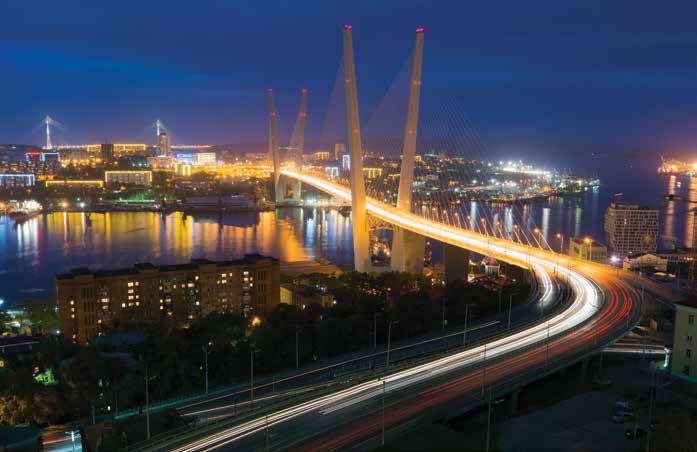
MEPC’s decision on a 2020 deadline is seen as boosting LNG as a marine fuel
The International Maritime Organization’s (IMO) decision to implement a global sulphur cap of 0.50% m/m (mass/mass) in marine fuel in 2020, rather than in 2025, has been taken as good news for the development of LNG as an alternative.
Not for profit industry foundation SEA\ LNG says it brings together key players from across the supply chain, including shipping companies, classification societies, ports, major LNG suppliers, downstream companies, infrastructure providers and equipment manufacturers to address market barriers and transform the use of LNG as a marine fuel.
Welcoming the move by the IMO’s Marine Environment Protection Committee at its 70th session in October, (MEPC 70) SEA/LNG put out a statement saying: “Certainty of the regulatory regime going forward is important for the maritime industry.”
The foundation’s chairman Peter Keller said: “In light of MEPC 70’s approval of the global sulphur cap in 2020, there is now new impetus to resolve the structural and commercial obstacles hindering the widespread adoption of LNG as marine fuel. “
He added that: “We anticipate increased and significant investments across the shipping value chain as a result of this decision and the certainty it provides. LNG is an economic, clean and safe marine fuel with increasing global availability, offering ship owners a real opportunity to improve the environmental performance of the industry.”
Even before IMO’s confirmation of the 2020 deadline there had been a steady stream of new LNG projects.
In one recent development, French classification society Bureau Veritas announced it is to class the first containership LNG–fuel conversion. Haren/Ems-based Wessels Reederei is to convert one of its fleet of 1,036 teu container vessels to LNG as fuel. Following conversion next year, the Wes Amelie will meet the requirements of Marpol Annex 6 Tier 3.
The conversion is being sponsored by the German Ministry of Transport while the project’s partners are Wessels Reederei, MAN Diesel & Turbo, TGE Marine Gas Engineering, SMB Naval Architects & Consultants and Bureau Veritas.
Philippe Donche-Gay, President of Bureau Veritas Marine & Offshore Division says, “Our experience with this kind of conversion on small scale LNG vessels helps the owners and other partners to move to confidently to this new and cleaner fuel.”
Shipowner Gerd Wessels says, “With the conversion to LNG we and our partners showcase our technical expertise and demonstrate practical environmental solutions for the merchant marine industry.”
The ship has a MAN 8 L 48/60B engine driving a controlled pitch propeller via gearing. MAN will convert the existing engine to a 51/60 DF dual-fuel engine.
The 500 cubic metre LNG fuel tank will be located in the fore part of the vessel to limit the loss of cargo capacity.
Bureau Veritas’s consulting arm Tecnitas is carrying out risk analyses for the fuel system and LNG bunkering.
In another development, the first LNG bunker stem in Sweden has taken place at Gothenburg. The tanker newbuilding Ternsund took on LNG in October at a protected location just off the island of Fotö at the entrance to the port.
“We have worked resolutely for a long time to create a situation where a ship could bunker liquefied natural gas in Gothenburg. We have now managed to achieve our ambition and we are extremely pleased with the outcome,” said Jill Söderwall, Vice President and head of commercial operations at the Energy Port in Gothenburg. The port is offering discounts of up to 30 percent of port charges for LNG-powered ships.
The Ternsund is operated by the Swedish-based Tärntank Ship Management. The ports expects more LNG bunker stem to take place soon as about LNG-powered vessels are being built for Swedish tanker operators who will operate the ships on routes that pass Gothenburg.
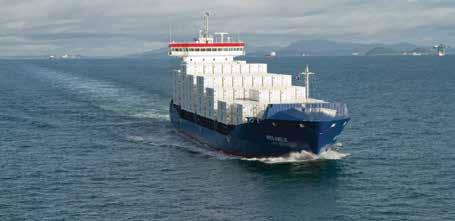
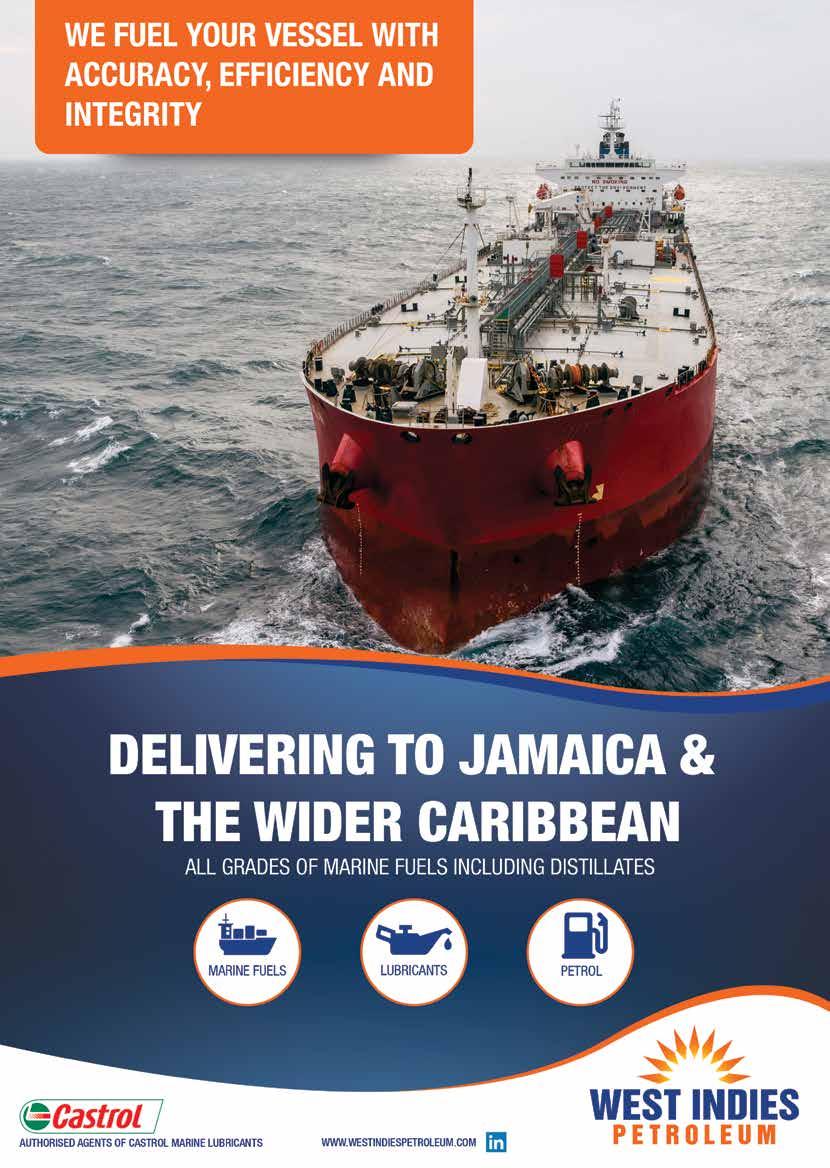

As John Rickards reports, many South American companies are on the expansion trail but there are concerns
In recent months one of the South American continent’s biggest producers of, and traders in, maritime fuels has shed its individual regional distribution arms as part of a restructuring and refocusing of its core business switch into high gear.
Brazilian giant Petrobras decided on its divestment programme as part of its 2015 strategic plan and signed agreements this summer for the sale of its distribution divisions in Chile and Argentina, which include distribution terminals, refining, sales of marine gas oil (MGO) as well as road and aviation fuels as the group trims the fat.
Southern Cross Group picked up a 100% stake of the company’s Petrobras Chile Distribuicion arm (held via another subsidiary, Petrobras Carib) for a net cash inflow to the parent of US$464m, of which $367m came directly from the sale price, and should have completed by the time World Bunkering goes to press.
Earlier in the year, Pampa Energia SA set ink on its $892m purchase of Petrobras’ entire 67.19% share in Petrobras Argentina, which includes the 30,500 bpd Dr Ricardo Eliçabe refinery in Bahia Blanca, producing 380 cSt and 180 cSt fuel oils as well as MGO.
The company’s long-term plan is to minimise its exposure to the distribution market by selling off or forming minority partnerships with other companies in the sector as it seeks to concentrate on energy production.
A Petrobras spokesman told World Bunkering that the company was unable to comment on the current status of the divestment program as a whole.
Despite the sell offs, Petrobras is expanding its maritime product offerings domestically. It has recently launched sales of RMK500 fuel, which it was careful to note met current ISO specs, at the port of Santos. The 500 cSt fuel is widely expected to take more and more of the existing HFO market away from the lighter 380 cSt grade of residual fuel due its lower cost and the fact that most ships burning 380 cSt are also capable of burning the heavier grade using existing plant.
Also eyeing expansion and development in the Brazilian market recently was multinational supplier GAC. Its Brazilian subsidiary opened its seventh office in the country, this time in São João da Barra in the north of Rio de Janeiro State, where it will provide local coverage for the Açu port complex. Açu is expected to expand threefold in the coming years, going from 10 berths to 30.
“The Açu Port is expected to become one of the largest port complexes in Latin America. The combination of commodities and activities related to shipping and logistics is definitely a great opportunity for GAC Brazil to showcase its main assets to the local market,” said Rodrigo Kill, GAC Brazil’s shipping manager.
Beyond Brazil, as one of the most active and fiercely competitive markets on the continent, in some ways Colombia’s bunker market mirrors the region. The offshore industry along the country’s northern coast continues apace despite the shaky oil market, and there are new port concessions coming in Turbo and Uraba as well as new port developments in Buenaventura, Barranquilla and Barrancabermeja and a gas terminal in Cartagena. In addition, there’s a push afoot to move more cargo via the River Magdalena. Despite this, though, the bunker industry faces ongoing challenges of supply and competition.
Terpel SA’s Eugenia Benavides Buitrago told World Bunkering, “The market in Colombia has been changing in the last few years. There are no official bunkering volumes in Colombia but it is estimated that the market has decreased from 50,000 tonnes per month in 2013 to 35,000 tonnes today.”
Supply of product was, she said, key. “The local suppliers have to produce IFO so they look to get raw material,” she said. “Today the state oil refinery (Ecopetrol) sells the [feedstock] in order that the supplier can produce and blend the product but does not sell IFO ready to deliver. Crudes are normally brought from the interior of the country increasing the price because of the freight charges.”
These challenges may have been one of the driving forces behind the current fashion in the Colombian market for exclusivity deals.
“There is a common denominator,” Benavides Butraigo said, “and it is that many local suppliers are working on associations with worldwide traders. So far this year announcements have been made for, on the Atlantic Coast, CI Van Oil working with Kamca Trading, CI Petrobunkers working with Lindsay Blee, CI Petrocosta working with Dan Bunkering, and on the Pacific Coast, Australian Bunkers working with Dan Bunkering.”
The only local players without any
exclusive deal with an outside trader, she said, were Quality Bunkers, Codis, International Fuels, Terpel, and the two oil majors ExxonMobil and Chevron Texaco. “This is a market that is changing constantly as the raw materials change from the refinery so suppliers have to work looking for new products everywhere,” she said.
Away from such a packed national market in the north, the continued strength of the southern cruise and Antarctic research sector has given an opening to Chile’s Copec Marine Fuels, which this autumn announced plans - due to start as this
magazine goes to press - to deploy an extra two bunkering vessels to the seas around Punto Arenas and Puerto Williams. The Tamina, with a 1,210 mt MGO capacity, will provide at-sea refuelling, while a second tanker of roughly half the size will join her by early 2017 to resupply her sister rather than force her to make the two-day voyage between Puerto Williams and Punto Arenas itself.
The two bunker tankers will also, the company says, be able to service ships when the port of Valparaiso is unavailable due to weather or delays.
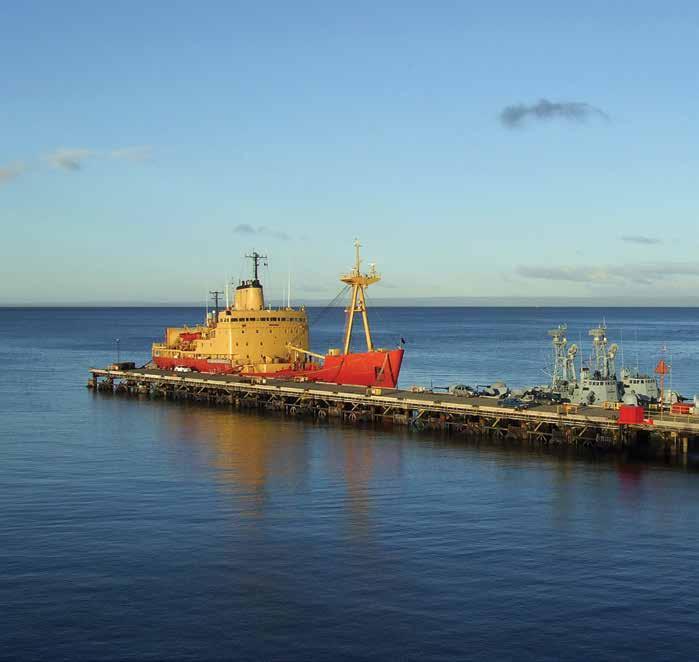
The move brings Copec’s fleet to five vessels, with the other three supplying a wider range, and larger capacity, of IFO all along the Chilean coast.
North of the continent’s opposite coast, in Jamaica, West Indies Petroleum has bought the ethanol storage and distribution facility of Jamaica Broilers Group in Port Esquivel for US$4m and a further US$18.5m in debt owed to the plant by the ethanol trade. WIP said it will convert the facility, which has a capacity of 600,000 barrels, for bunkering and fuel storage usage and break bulk, allowing roughly half the site for each, and claims now to have the largest bunkering capability in Jamaica.
Port Esquivel is WIP’s first venture into shore-based storage. Prior to the deal with Jamaica Broilers, the company had two barges with a combined capacity of 69,000 barrels and was servicing an average of 200 vessels through those barges at the Port of Kingston and via road tanker. At the time of the deal, WIP director Charles Chambers said, “It gives us significant capacity to expand, but that expansion is a function of how much we can sell. It’s a catch–22; you have to have the capacity before you go after the business.”
Jamaican minister for science, energy and technology said that it was important for the country to capture a fair share of the bunkering market given the Panama Canal expansion. The new facility will, according to the company, allow it to offer refuelling services to larger vessels such as Jamaica’s cruise industry as well as larger box ships, something that WIP previously didn’t have the capacity to attract. Given the different viscosities and pumping requirements of ethanol versus fuel oil, the facility has required some US$2m in conversion before being suitable for bunkers which should be complete by the time of going to press. The plant itself had been idle for two years after ethanol tolling contracts dried up.


The bunker industry in Northern Europe is investing and adapting to meet a changing market, as John Rickards reports
Despite a prevailing environment of low prices and difficult trading conditions, not to mention the same low prices of regular fuel oil hurting demand for LNG and alternative fuels, Northern Europe continues to see bunker players expanding their operations as well as fresh investment in alternatives to HFO.
UAE-based Gulf Petrochem Group opened an office in Dordrecht this summer, supporting physical supply operations in Rotterdam with two timechartered 3,000 dwt barges serving the port. The move was followed up in the autumn with the chartering of two more barges, this time of 3,000 dwt and 1,600 dwt, serving Antwerp.
“Entering the Antwerp market only serves to reaffirm the group’s commitment to grow the business off the back of a very successful start in Rotterdam,” said the company’s global head of bunkering Neil Lamerton. “Further to this, our latest expansion now allows us to supply our customers with consistently high quality products and customer service to match with a fully-fledged, first class ARA service.”
At the time of the company’s initial entry into the ARA region, Lamerton said, “We know that the market situation is volatile… This expansion is indicative of our prudent risk management practices especially considering current market conditions.”
Also opening a Dordrecht office this summer to supply across the ARA region was Sonan Bunkers. The company has a single barge serving the coast.
The timing of the two firms’ moves may have worked out well for them, with one of ARA’s existing players ceasing trading and filing for bankruptcy in late June. Belgium’s Maritime Bunkering & Trading had operated a fleet of five barges across the region as well as trading MGO.
The reasons behind MBT’s folding haven’t been released, although the company had been at least peripherally involved in the fallout of OW Bunker’s collapse, named as one of three suppliers claiming for a $310,000 fuel delivery in a lawsuit between NYK Trading and ING Bank being heard in a New York federal court this year.
Across the North Sea, Monjasa has further tightened its hold on the English Channel and south east of the UK with an exclusivity deal for bunkering operations at Tongue Anchorage in the Thames estuary and in Portland Port.
Monjasa Europe managing director Ricky Kenbjerg said: “It’s part of the Monjasa Group strategy to consolidate and strengthen our physical capabilities across North Western Europe. With this extended set-up in the English Channel, we are underlining our capability of offering supply security throughout the region, matching our customers’ needs. Furthermore, we are exploiting further synergies with our existing physical set-ups in Portland Port, UK, the Port of Skagen, Denmark, and in Riga, Latvia. The aim is to benefit our customers, by offering flexibility on a string of supply locations.”

The Portland arrangement is one the company said was important due to the port’s proximity to freight routes to and from London, because passing vessels can take bunkers with limited deviation times and no need for pilotage. Monjasa took over the Portland facility from Aegean Marine Petroleum last year, highlighting its position on the edge of the northern European ECA.
London is one of a string of ports across northern Europe to introduce new incentive programs for reduced-emission ships or to aim for reduced emissions from their own vessels. The Port of London Authority announced this September that vessels with an Environmental Shipping Index score of 30 or higher will receive a discount on port dues. The ESI was developed by the World Ports Climate Initiative and takes account of the broad spread of vessel atmospheric emissions.
At this year’s SMM in Hamburg, Hamburg Port Authority signed a letter of intent with DNV GL to implement a range of green technologies across the port’s 31-strong fleet, and the city’s own 18-strong municipal fleet when the HPA takes that over in July.
“This letter of intent is another building block in our strategy of setting Hamburg’s harbour on a sustainable course,” said HPA executive board chairman Jens Meier. “We are delighted to know that DNV GL is working alongside us as a strong partner and independent advisor, supporting us every step of the way with their expertise.”
DNV GL’s maritime president Torsten Schramm said: ”We are very pleased that DNV GL has been chosen to support the HPA in promoting low-emissions propulsion technologies. This sets the course for a modern, sustainable fleet.”
Similarly, the Port of Amsterdam has begun working with GoodFuels Marine on a marine biofuel pilot project which is hoped will reduce the port’s fleet carbon emissions by 14%. The pilot project, which should be completed in early 2017, will see the port use hydrogenated marine biofuel made from sustainable waste streams in place of diesel.
“Port of Amsterdam has supported us from the very start in developing the market for sustainable marine fuel. We are therefore delighted to join together to set an example for other ports and vessel operators,” said GoodFuels’ Doryan Daamen.
“For the immediate future, we will continue to source and produce our fuels mostly from waste streams such as used cooking oil. But we are currently working – also actively with the Port involved – to develop new marine biofuel streams that can be scaled up significantly.”
In September, Dutch dredging firm Boskalis completed trials in collaboration with GoodFuels Marine and Wärtsilä of another alternative renewable fuel, a drop-in diesel alternative produced from wood residue, left over from timber processing, by Finland’s UPM Biofuels.
While he said it was too early to comment on the cost of the fuel versus traditional MDO, UPM vice president Sari Mannonen told World Bunkering: “UPM BioVerno [the brand used] reduces CO2 emissions by up to 80%. It is practically sulphur-free (and ash-free) drop-in fuel, so SOx emissions (and particle emissions) are eliminated. BioVerno renewable product represents a high quality fossil diesel substitute fuel in marine use.”
She said that, unlike some other trialled alternatives in development, the product was already produced in large-scale quantities and the company was looking to expand its market share.
“We produce UPM BioVerno renewable diesel in commercial scale already,” she told World Bunkering. “UPM Lappeenranta biorefinery started commercial production in 2015 and produces annually 120 million litres of renewable diesel. We aim to become a major player in advanced sustainable biofuels and have founded a separate biofuels development programme to define our next steps in biofuels.”
“Current forecasts predict that marine biofuels could make up 5 – 10% of the marine fuel mix by 2030, significantly contributing towards the reduction of the shipping industry’s carbon footprint. [Following work with the consortium with GoodFuels Marine, Boskalis and Wärtsilä] we already see big potential for woodbased sustainable biofuels, such as UPM BioVerno, in marine use - especially with customers who see sustainability as a business driver.”
Boskalis’ 1,696 dwt cutter suction dredger Edax in the first half of 2016, working on the Marker Wadden nature reserve project, resulted in a 600 mt CO2 saving. With carbon emissions reduction and monitoring very much on the current agenda, a commercially-viable alternative to regular marine distillates with marked emissions reduction and no need for costly retrofitting or new equipment could certainly find a healthy market in European waters, though as with any alternative fuel, including LNG, it will have to do so in the teeth of the current low cost of regular fuel.


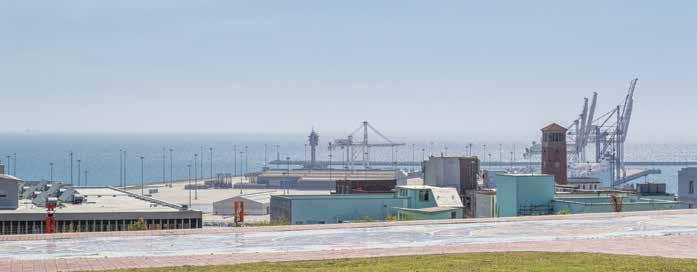
After the crackdowns by a number of governments in West Africa on bunker operations, fuel theft and unlicensed oil trading of the past couple of years, the picture across the continent remains one of a mixture of frustration and opportunity.
This year’s IBIA in Africa Forum heard how the market along much of the West African coast is seeing slowly improved regulation and stability, but government action has at times made trading conditions too difficult for suppliers.
For example, Pointe Noire in the Republic of the Congo has only one dominant supplier, while Angola lost its entire MGO market after a customs crackdown.
Supply can be problematic at times, while East Africa’s nascent fuel market remains largely underdeveloped and plagued by even more severe infrastructure issues, and South Africa endures issues of its own: tight product supply and high port fees discouraging bunkers-only calls and depressing demand.
In West Africa at least a couple of foreign firms targeted for action in legal crackdowns considered the actions heavy-handed or politically-motivated.
Mercuria is the latest international trader to pull out of West Africa, shuttering its Minerva Bunkers operation in the region in the autumn.
The company launched its operation at the start of the year, with a 13,115 dwt tanker offering offshore bunkering and a second newbuild intended to join it in March. At the time of the launch, Minerva’s physical supply business development manager Miguel Fernandez said: “We know this region very well and know what our customers need in this region - fast and accurate supply, high quality products and being able to avoid unnecessary port calls and lengthy waits.”
Mercuria and Minerva have not confirmed the reasons behind the cessation of their West African venture after only eight months, while Fernandez has left the company,
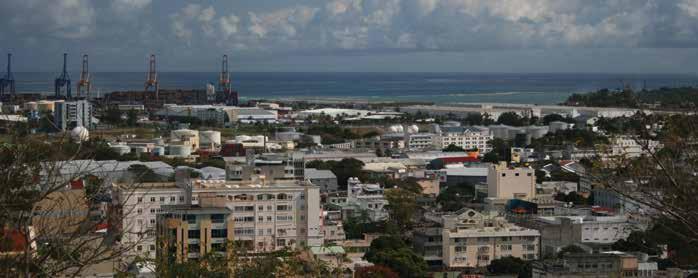
But its failure illustrates how difficult a market the region can be for even global players to crack.
Monjasa remains the only major international operator serving the region in significant volumes, and even it has endured challenges in recent times, most notably March’s guilty ruling by a Nigerian court over the 2015 case brought by the authorities against one of the company’s chartered bunkering vessels and its crew for “illegal bunkering”. Monjasa has bitterly contested these charges and has always insisted that its vessel was beyond the 12-mile limit and that allegations of operating in Nigerian territorial waters without permission were therefore completely baseless.
The company has appealed this judgment to UNCLOS and is said to look forward to progressing the case in an internationallyrecognised system of justice. It was nevertheless reported in Danish business outlet Finans and elsewhere in August that France’s Bourbon Offshore’s Dubai based subsidiary Bourbon Sourcing and Docking DMCEST had blacklisted the company’s Dubai-based subsidiary over the ruling and would no longer use it for bunker services, in line with its internal trading policies. In the same reports, Monjasa said its business would not be impacted by the news, and there have been no reports of other customers adopting a similar position, nor has Bourbon explained the delay between ruling and announcement. As a group, Monjasa delivered a total of 4.1m mt of bunkers in 2015, an annual increase of nearly 7 percent.
One company aiming to expand its presence, this time in East Africa, is Augusta Energy. The supplier has added to its existing South African office to launch a new physical supply operation in the Mozambique Channel, Madagascar and Mauritius. Augusta has been responsible for shipping oil and products into Tanzania for a number of years.
Its activities have included a role in redeveloping Dar es Salaam’s oil jetty and tank farm to provide better storage capacity and easier loading and unloading.
Meanwhile Mauritius has been promoting the possibility of Port Louis as a bunker hub for the past two years following investment in infrastructure to support the nation’s plans to handle one million mt of bunker fuel per year. The country is widely considered one of the most likely contenders to do so given its facilities.
Bunker group Bomin launched a new subsidiary in the island nation this year. “Port Louis is the only official port of entry and exit for sea vessels in Mauritius, and it is critical that we have a strong physical presence here to support our customers and our global network,” said Jan Christensen, the group’s head of bunker operations.
He added: “Customers want a first-rate service that maximizes both cost and operational efficiencies, a flexibility in the choice of products, assurances of their quality, and that they are delivered at the right quantity. Bomin has built a global reputation for providing this. The launch of Bomin Mauritius is a continuation of our strategy to expand and enhance our global physical operations.”
Another nation hoping to draw new traffic through infrastructure improvements is Kenya, which is aiming to upgrade Mombasa to improve port efficiency. In August this year the government also approved plans to start commercial crude production by June 2017.
The country has an estimated 750m barrels in recoverable reserves, discovered in 2012, and will refine up to 4,000 bpd of product at the Kenya Petroleum Refinery at a reported life-of-field cost of between $25 and $30 per barrel.
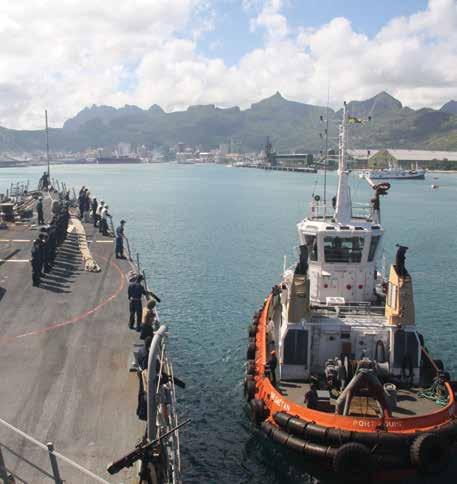
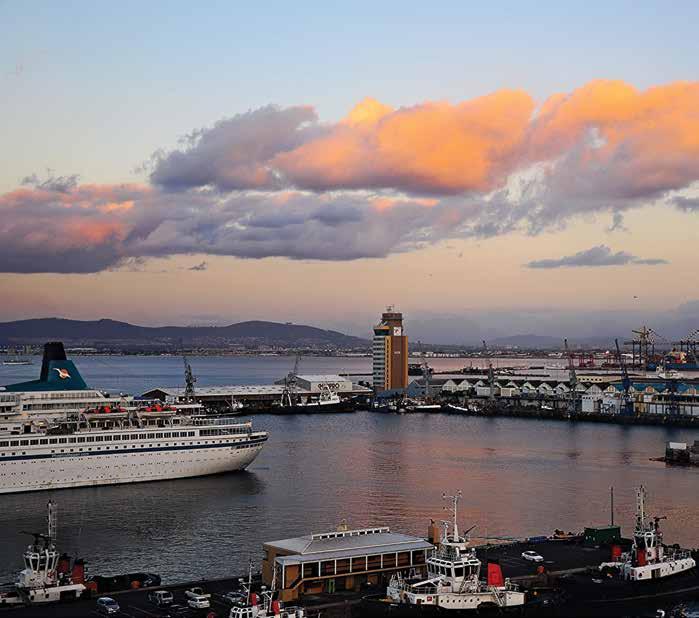
Upgrade of refinery equipment and access is underway, and if the plans come to fruition then East Africa could see both increased tanker traffic and the possibility of locally-produced fuel products.
South Africa itself has seen additional players moving into the market, despite difficulties attracting bunkers-only calls.
The country’s Transnet National Ports Authority has been beefing up port facilities in a bid to take advantage of the country’s position on the main east-west trades, with Cape Town in particular slated for heavy expansion of both its cruise and container capacity in the near future, both of which should increase demand for bunkers.
Aegean Marine Petroleum has been the major mover in the country in recent months, and launched supply operations in Algoa Bay, serving Port Elizabeth and Coega, in March.
In July, it added a second newbuild bunker vessel and reflagged it from Liberia to South Africa, reportedly in support of South Africa’s aims of bolstering its status as a maritime nation rather than merely a port of call. More generally, Aegean has been keen to emphasise the local economic benefits to the city of having a successful bunker operation.
Regional manager Kosta Argyros was reported in local media as saying, “On average, anywhere where a bunkering station exists, the city’s income could increase by 19 percent. For the local economy, the income potential is huge. The port, at full capacity, could rake in R5-million (US$367,000) for anchorage every month.”
“The registration of the vessel… also introduces many economic benefits for the people of Port Elizabeth such as surveying, offshore services and crew changes (more traffic through the airport), hotel accommodation and light and heavy manufacturing.”
The company followed up by relocating a third barge from Singapore to expand its Port Elizabeth operation further. When discussing the company’s shuttering of less competitive operations elsewhere during its summer earnings call, Aegean president E Nikolas Tavlarious described the South African venture as “a tremendous benefit” that Aegean was “happy with”.
With much-needed investment coming into ports across the continent, making African ports more attractive to international carriers, and with better regulation, security and stability, particularly in the historically challenging waters of West Africa, Africa’s bunker sector could be set to begin fulfilling its potential for both local and international players.
In response to concerns over emissions from cruise ships the News South Wales government has mandated the use of low sulphur fuel in Sydney Harbour and is enforcing the new regulations
The NSW Environment Protection Authority (EPA) fined Carnival PLC A$15,000 (US$11,000) after one of its P&O Cruises ships, the Pacific Jewel, breached new low sulphur fuel regulations in Sydney Harbour that were introduced last year.
A fuel sample taken by the ship’s crew and provided to EPA officers while the ship was berthed at the White Bay Cruise Terminal on the 26 February 2016 had a sulphur level of 0.293%, nearly three times the 0.1% sulphur limit.
The fine, handed down in May, was the first to be issued under the new regulations which came into force from 1 October 2015. The regulations require cruise ships berthed in Sydney Harbour to use low sulphur fuel within one hour of berthing until one hour before departure.
EPA Acting Director Metropolitan Greg Sheehy said: “The ship’s crew had started changing over from using high sulphur fuel shortly after the ship had berthed at White Bay, but the sample showed that the fuel being used in the ship’s engine during the EPA’s inspection did not meet the low sulphur fuel requirements.”
He added: “Figures before the regulation came into force showed that cruise ships produce around 40% of total fine particle emissions from shipping in Sydney Harbour.
Therefore it’s vital that cruise ship operators adhere to the new regulation to protect Sydney’s air quality and the health of the community.”
From 1 July this year, however, the 0.1% rule was extended to cover all of Sydney harbour and not only while a ship is alongside the berth. The regulation allows the use of alternative methods of complying, such as using scrubbers.
In a statement EPA said: “Reducing sulphur is the key means of reducing both fine particle and sulphur dioxide pollution.”
In what is said to be an Australian first, Wesfarmers subsidiary EVOL LNG was approved in July by Fremantle Ports to bunker LNG, providing access to the cleaner shipping fuel alternative for LNG-powered marine vessels visiting Fremantle Port.
The move comes after oil and gas company Woodside announced in April that it had signed a five-year charter contract with Norwegian-owned Siem Offshore Australia to deliver Australia’s first LNG-powered marine support vessel next year.
Since 2001, EVOL LNG has been involved in handling of LNG in the Australian power generation, industrial and transportation markets. The availability of LNG as a bunker fuel, which will be delivered from EVOL LNG’s Kwinana LNG plant, will pave the way for LNG-fuelled ships to visit the port, and provide the option for local ferries and workboats to switch to the lower-emission fuel that may also be lower cost.
It will also see Fremantle Port become part of a growing global LNG bunkering network which includes major ports in Europe, North America, Qatar, Singapore, Japan and Korea as well as more than 40 other ports from around the world which bunker LNG, or have plans to do so.
EVOL LNG’s Business Manager, Nick Rea, said he was confident that global fleet of LNG-fuelled ships would continue to grow, and that EVOL LNG was well placed to support the growth. He explained: “Our decision to provide LNG bunkering to the shipping industry is based on a long-term strategy. Over the past decade, we’ve seen the number of LNG-fuelled ships in operation worldwide increase steadily from a handful to more than 70, with an additional 80 to be built in coming years.”

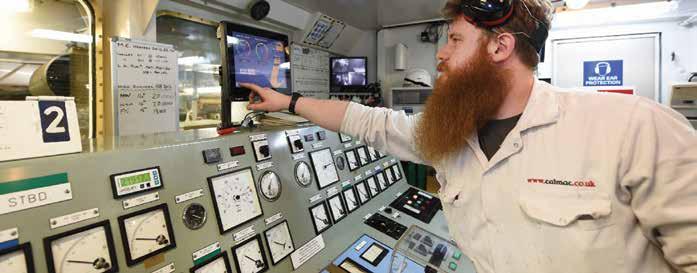
Damian McCann, enginei product manager at Royston diesel power, says that the MEPC’s call for the reporting of vessel fuel consumption highlights the growing importance of advanced fuel management systems
The IMO’s 69th Marine Environment Protection Committee (MEPC 69) has now drafted mandatory requirements for ships to record and report their fuel consumption.
Under the system, ships of 5,000 gt and above will be required to collect a variety of data, including consumption data for each type of fuel they use. The data will be reported to the ship’s flag state after the end of each calendar year, which will review it and issue a Statement of Compliance to the ship. Flag states will be required to pass this data to IMO for inclusion in a Ship Fuel Consumption Database.
The draft requirements will be put forward for adoption at MEPC 70 and could enter into force as part of Marpol in 2018.
The mandatory data collection system is intended to be the first stage in a threestep process in which analysis of the data collected would provide the basis for an objective, transparent and inclusive policy debate in the MEPC on whether any further measures are needed to enhance energy efficiency and address greenhouse gas emissions from international shipping.
The move comes at the same time as fuel monitoring in the world bunkering industry has also come into focus.
For example, IBIA recently announced it has finalised a Standard Operating Procedure (SOP) to help bunker surveyors identify their responsibilities when overseeing bunker deliveries involving Mass Flow Meters (MFMs) in Singapore.
The SOP has been developed to address industry concerns and benefit all parties in the bunkering supply chain, and build trust in this new operating paradigm as Singapore moves toward the mandatory use of MFMs for the supply of marine fuel oil.
In August it was reported that a further four Singapore barges had been approved with mass flow meters, brining in the tally to 102 and meaning that almost 50% of the registered bunker vessels in Singapore are now equipped with MFMs.
At the same time it is known that some of the bunker operators are increasingly requiring vessel owners to install fuel monitoring systems so that there is consistent and traceable fuel measurement controls and records between ship and shore.
All of these measures bring the issue of fuel consumption and operating efficiencies into even greater focus and reinforces a marine sector trend in favour of effective fuel monitoring that is rapidly gathering pace.
For example, in the oilfield services sector, with the fall in oil prices resulting in considerable E&P and cost reduction pressures coming from the oil and gas majors, the fuel consumption efficiencies of OSVs has already attracted considerable interest.
As a result, many international oil companies (IOCs) now require the inclusion of fuel monitoring data in offshore support contracts to provide better visibility of operational costs, to encourage improved working efficiencies and to combat fuel security issues.
Together these examples demonstrate how next generation fuel monitoring systems are already being used to provide the robust, accurate and comprehensive data needed for owners and operators to properly analyse and measure vessel performance.
The most modern fuel management systems have taken both the hardware and software elements of traditional fuel management systems and increased their ability to gather comprehensive and real time engine performance data, as well as take into account a range of other operational factors and conditions.
In doing so, sophisticated on board flowmeters and sensor systems are now combined with powerful data capture software to produce a complete picture of the mission critical information required to assess and maintain vessel fuel efficiencies.
Importantly, new data options include the measurement of fuel consumption by individual engines so that operators can more accurately determine actual engine loads for the scheduling of service and overhaul requirements.
Fuel consumption figures and trends can also be provided for different operating tasks such as standby, in transit and manoeuvring, as well as during loading and discharging routines – with the fuel consumption levels associated with the latter now coming under particularly close scrutiny by charterers and vessel owners.
In the latest and most advanced fuel monitoring technologies these changes in operational mode can be detected automatically, removing the need for manual intervention by the crew and improving the quality of the fuel consumption data by eliminating the risk of human error.
Building on the enhanced fuel data analysis and engine performance reporting options, advanced fuel monitoring systems can also incorporate low cost engine profile-based emissions analysis.
Operating without the need for an exhaust gas analyser, this method captures key engine performance data, engine and fuel specifications, and flow rates which are then used for the accurate calculation of a range of vessel emissions measurements.
NOx profiles for individual engines can be created using the ‘carbon balance method’ which refers to the NOx Technical Code MEPC 177 (58), statistical algorithms and engine test data. Combining this with operational factors such as torque, RPM and other engine and fuel data enables a specific NOx emissions factor to be calculated for comparison with IMO regulations.
SOx and CO2 emissions are also computed from the mass balance conversion factor applied to the adjusted fuel consumption and air mass flow, alongside combustion efficiency.
This enables advisory SOx levels to be predicted, informing fuel switch over decisions during travel in emissions controlled zones.
In this way, detailed engine performance and fuel management data can also be used to support a wide range of environmental considerations. With density measurement of fuel, operators can now use the fuel data to verify when switches are made from heavy fuel to low sulphur fuel in ECA and SECA zones, which are especially prevalent in the USA in relation to a vessel’s SEEMP.
Modern fuel monitoring systems also facilitate the compilation of daily reports and vessel energy efficiency plans in different formats. As well as presenting fuel data on board via touchscreen monitors installed on the bridge and in engine control rooms, data transfer from ship to shore means that live and historical performance figures can be accessed through a simple web dashboard for full vessel performance analysis.
As a result, the ability to remotely access and interrogate the information captured on board directly through online portals and web dashboards means that onshore fleet management and supervisory staff do not have to rely solely on daily crew or voyage reports.
As recent announcements confirm, the crucial role of advanced fuel management systems is now being widely acknowledged in terms of their ability to provide the vital data needed for more informed decisions to be taken on vessel performance and the control of vessel emissions.
In the passenger transport market, Scottish ferry operator Caledonian MacBrayne (CalMac) announced earlier this year that the installation of advanced fuel management systems across its large vessel fleet had put the company on track to meet its own 2% greenhouse gas emissions reduction target.
Marine diesel power generation specialist Royston Limited won the contract to fit its enginei fuel monitoring technology on the largest ferries in the CalMac fleet as part of the company’s Ecoships programme.
The enginei system uses Coriolis flowmeters and sensors to accurately monitor the fuel being consumed by each of a vessel’s engines, which is tracked against GPS data, voyage details and operational mode.
The real time data is collected, processed and relayed to bridge and engine roommounted touchscreen monitors to enable the ship’s master to adjust vessel speed and take whatever other actions are needed to reduce fuel consumption.
Under project Ecoship, CalMac says that the real time data being provided by the fuel monitoring system enables the master and chief engineer to make small vessel speed and operation adjustments that are reducing fuel consumption and emissions, without affecting timetable performance.
The company reports that these minor tweaks, whilst not affecting the delivery of the timetable, have shown encouraging results with the company’s two per cent reduction target looking highly likely and the fuel management installation likely to pay for itself within a single year.
For more details visit www.enginei.co.uk
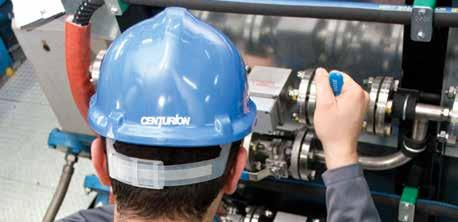

Our regular survey seeks out innovations that are set to impact the bunkering industry
Recent changes in fuel have led Parker Racor (Racor), a division of motion and control technologies company Parker Hannifin, to add a new range of long life, high performance elements to its established Turbine series of filters for the marine and power generation markets.
Racor says that its Turbine series, which has been subject to a series of enhancements over the past 10 years, is used to protect “very valuable and vulnerable” diesel engines from water and gross contamination now found in many commercial diesel fuels.
The company says that diesel solely obtained from crude oil with medium to high levels of sulphur content worked well in traditional diesel engines. However, following the growth of ultra-low sulphur diesel, along with the blending of bio-diesel into fuels for environmental reasons, additives have been introduced to stabilise the fuel and replace lost lubricity. These additives (along with bio-diesel content) greatly increase the difficulty of removing water from the diesel. Contamination levels have also increased.
Racor’s long life, high performance elements for the Turbine filter feature new Aquabloc 3 TL 10 micron media, which is designed to hold significantly more contamination before becoming blocked. Water is removed more consistently in lower quality fuels containing additives and bio-diesel.
ABB says it new marine torque measuring system targets fuel efficiency and engine optimisation. Torductor Marine has been successfully trialled on Stena Line’s freight ferry Stena Scotia, where sensors tracked the performance of the vessel’s engines.
The new system will fit into ABB’s Marine Software portfolio, which visualises the data for the onboard crew and can be shared with the ship’s shore-side support team.
Torductor Marine builds on ABB’s 50 years of shaft torque monitoring experience with the latest adaptation as simple as it is effective. Contactless sensors are mounted facing the propeller shaft with a gap of approximately 1.5mm. Other than the shaft itself, there are no moving parts. ABB says, the system is almost maintenance free.
The system provides a means of complying with IMO’s Ship Energy Efficiency Management Plan (SEEMP). Torductor Marine provides ship-owners with a clear and quantifiable insight into the performance of the vessels engine, such as propulsion power, Specific Fuel Oil Consumption (SFOC), total number of shaft revolutions and the total amount of energy developed during a voyage. In combination with ABB’s Coriolis Master fuel flow sensors and insight in the SFOC, related key performance indicators can be generated.
“The shipping industry is turning to technology to make their fleets more efficient and comply with international regulations,” said Juha Koskela, Managing Director of ABB’s Marine and Ports business unit. “At ABB we are leveraging increased ship connectivity and Torductor Marine exemplifies how we are helping ships become more efficient through Marine Software.”
After a successful test with the new Torductor on the port propeller shaft, Stena Line agreed to turn the test installation into a permanent one, and purchased a second installation for the starboard shaft.
Calnetix Technologies has just released a report describing the operational results from the first shipboard installation of its new Hydrocurrent system.
Hydrocurrent is a new-technology system developed by Calnetix and Mitsubishi Heavy Industries Marine Machinery and Engine Company (MHI-MME). It uses an Organic Rankine Cycle (ORC) process with a proprietary turbo-generator to convert thermal energy from an engine’s jacket water into usable electricity for shipboard consumption. The system was first introduced in 2014 and underwent successful classification society tests with Lloyd’s Register and Class NK.
The first ship installation took place in April 2016 on the ABS-classed AP Møller containership Arnold Maersk. The report describes the installation, commissioning and initial operational results achieved on the ship during its first voyage after the system was put into service.
“The commissioning tests and operational data reveal the Hydrocurrent installation on Arnold Maersk met or exceeded expectations,” said Calnetix CEO Vatche Artinian. “It consistently produced 110 to 115 kW of electric power to the ship’s grid throughout the voyage, during which the crew adjusted the cooling water flow into the condenser receiving tank downward by reducing power to the water pump. When operated at full cooling water flow, the system put out 125 kW.”
Calnetix is moving toward full commercialization of the Hydrocurrent technology. The company announced an agreement with Tokyo Boeki for manufacturing the Hydrocurrent system earlier this year. It will be marketed by MHI-MME through its worldwide distribution channels.
The report, Commissioning and Initial Shipboard Operation of Hydrocurrent™ 125 kW Marine Heat Recovery System, is available for free download at https://www.calnetix.com/
“Energy-efficient” cat fine protection
Specialist engineering solutions company Alfa Laval says its new FlowSync system is a “single solution for automatic flow control, unique in its ability to steer multiple separator feeds simultaneously”.
Alfa Laval FlowSync is an automatic control system that synchronizes the oil feed to Alfa Laval separators with the engine load. By matching the flow of fuel to the engine’s needs, it increases retention time in the separator bowl, giving the separators the best possible conditions for doing their job.
As the only system of its kind that can steer multiple separator feeds simultaneously, FlowSync can optimize the entire fuel cleaning process for the best protection and energy efficiency.
“With FlowSync, Alfa Laval’s world-leading separators become an even stronger and more cost-effective defence against cat fines,” says Mats Englund, Application Manager, Fuel & Lube Oils at Alfa Laval.
The company says that, to increase the effectiveness of centrifugal separation, which remains the best defence against cat fines, FlowSync takes fuller advantage of slow steaming. While slow steaming today is beneficial overall, it makes ineffective use of the fuel system layout.
“Since most vessels use fixed-speed feed pumps, they experience a large overflow of separated fuel when slow steaming,” Englund explains. “At partial loads the unconsumed fuel is returned to the settling tank, only to be pumped and separated again. Unfortunately, the resulting improvement in cat fine content is negligible.”
When FlowSync is used, the fixed-speed pumps are replaced with variable-speed pumps. These are steered automatically by FlowSync, which matches their throughput to the engine load with an ample margin of safety. “Automatic control is integral to achieving full benefit from the investment,” says Englund. “Because the crew is not always alert to changes in engine load, manually controlled variablespeed pumps tend not to be adjusted.”
This leads to a positive impact on separation efficiency. As the flow rate decreases, the fuel is allowed to spend more time in the separator bowl, which increases the separator’s ability to remove smaller and lighter particles. A properly operated separator removes nearly all cat fines larger than 10 µm, cat fines smaller than 3 µm are substantially more difficult.
“Increasing retention time in the bowl lets the separator remove the most stubborn particles,” says Englund. “Even the tiniest cat fines can cause significant wear and damage if they become trapped between the piston ring and cylinder liner.”
Alfa Laval says that FlowSync has major energy saving benefits benefits. Because the feed rate is matched to the fuel consumption, there is minimal overflow from the day tank back to the settling tank – and no re-pumping of previously separated fuel. This saves energy.
However, according to the manufacturer, more energy is saved in the separator, where the fuel has to be accelerated, driven through the disc stack and finally pumped out again. A separator consumes around 1 kWh per cubic metre of separated fuel, which means savings of 1 kWh for every cubic metre of reduction with FlowSync.

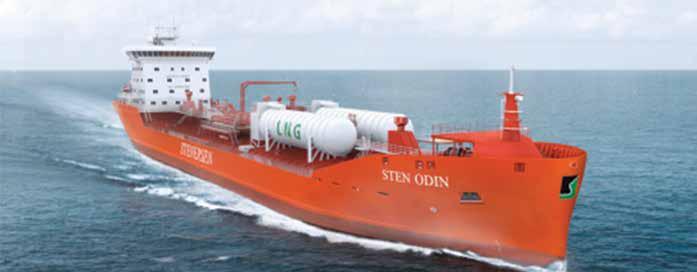
Norway-based shipowner Stenersen has ordered a new direct-drive permanent magnet shaft generator solution order for its chemical tanker newbuildings
Finnish based energy efficiency solution provider WE Tech Solutions (WE Tech) says it has received an order to deliver its direct-drive permanent magnet (PM) shaft generator solution to a series of two 17500 DWT IMO class II chemical tankers. The order also includes an option for two further shaft generator systems.
PM technology specialist The Switch will provide the generators while the tankers will be built by the Chinese shipyard Taizhou Kouan Shipbuilding for Bergenbased shipowner Rederiet Stenersen.
The direct-drive PM shaft generator solution from WE Tech provides the vessel’s electrical network with up to 1500 kW electrical power in power take out (PTO) mode.
Stenersen’s Director Ship Management, John Stenersen says: “WE Drive provides the advantage of being able to run our two-stoke main engine at variable speed, resulting in significant fuel savings compared with fixed speed. The operating hours of the auxiliary generators are dramatically reduced, thanks to the use of the We Drive. We don’t need to run the auxiliary engines when using variable speed for the main engine.”
In Power Take In (PTI) mode, WE Drive is used as an auxiliary propulsion drive when the main engine is out of operation. It converts auxiliary generator power to propulsion power by employing the PM shaft generator as an electrical motor. Stenersen continues: “There is lower mechanical loss from the main engine to the propeller when using the direct-drive PM shaft generator instead of a standard tunnel gear solution. This results in a decreased power requirement from the main engine and lower fuel consumption. Thanks to the modular design of the WE Drive, the solution has been extended to include shore connectivity and will utilize the common DC-link for energy-efficient DC power distribution in the bow thruster.”
Eniram and Wärtsilä have launched what they describe as “a cost-effective, next generation fleet performance monitoring service – that offers a vastly improved and more accurate solution compared to manual performance reporting with Automatic Identification System (AIS)”. The new SkyLight system collects data about the ship’s movements every five minutes and sends it via a satellite connection to Eniram’s data centre.
This data, together with the vessel’s noon reports, is combined and enriched with meteorological data, sea state and currents to model the vessel’s speed and fuel performance.
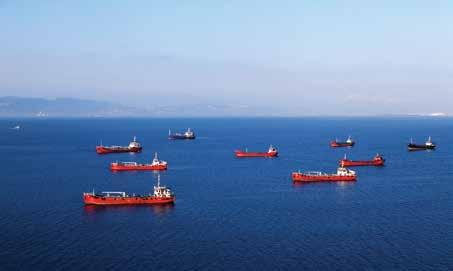
According to the two companies, SkyLight makes it possible to calculate very accurate fuel-speed curves without onboard integration or costly installations. This forms the basis for all ship and performance optimization.
Eniram and Wärtsilä say that, with SkyLight, ship operators can costeffectively monitor their fleet and compare the performance of each vessel in great detail. The software keeps records of the ships’ performance, enabling more prompt reporting, planning and cost optimization.
“Access to fuel and speed performance data increases visibility and supports the optimization of the vessel’s performance. This way, ship operators can manage their business more effectively,” says Jan Wilhelmsson, Vice President Commercial Shipping at Eniram.
“Delivering performance monitoring through portable equipment as a service enables operators with shorter business cycles to get the benefits of advanced data analytics. As satellite connectivity is rapidly improving, this type of service is a natural first step in the utilization of real-time data for fuel performance optimization.”
SkyLight can also allow transparent and near real-time Charter Party monitoring. It will deliver an enhanced normalized fuel curve that can improve the optimization of commercial operations.
The service is subscription-based and delivered with a portable two-way transponder that is attached to the rail of the ship by the crew. The customer has instant access to the collected and analyzed performance data via Fleet, Eniram’s cloud-based software interface.
Reports are also sent to the customer in a PDF format for easy storage.
“With opportunities created by connectivity and the Internet of Things (IoT), we can provide intelligent sensors, integrated satellite communication and web-based analytics tools for optimising ship performance at cost levels never seen before. This, combined with the vast amount of data Eniram has collected over several years, brings cost savings to our customers and helps them to make the right business decisions,” Wilhelmsson says.
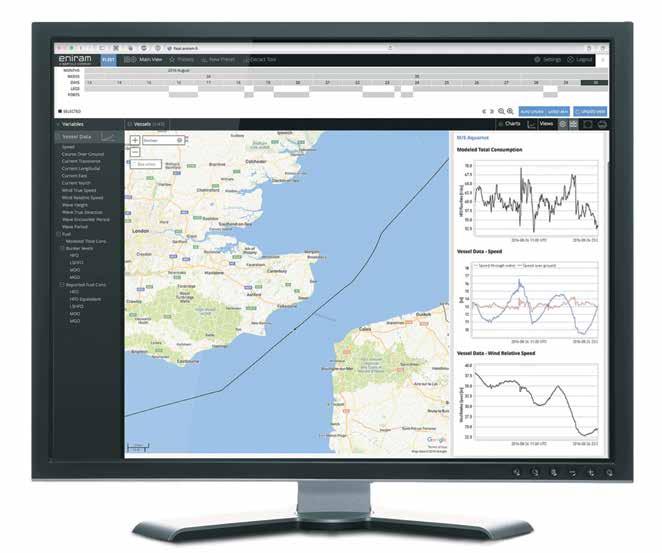
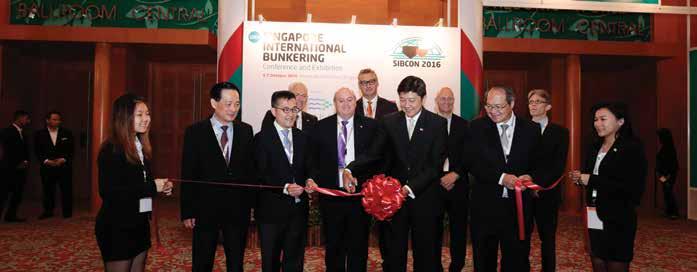
Once again Singapore’s biennial bunkering conference drew in the crowds and provided the backdrop for major initiatives
October’s 19th Singapore International Bunkering Conference and Exhibition (SIBCON) stamped its authority on the market with over 1,600 participants attending and “reaffirming industry’s recognition of the largest and most influential bunkering event in the world”, its organisers said.
Singapore’s Acting Minister for Education (Schools) and Senior Minister of State, Ministry of Transport, Mr Ng Chee Meng, presided over the opening ceremony held at Resorts World Sentosa.
SIBCON 2016’s theme was “The Journey Towards Cleaner Marine Fuels”, reflecting a pressing need, the organisers said, for shipping companies, oil majors, bunker suppliers and other stakeholders to work together to develop cleaner fuel solutions for the future.
More than 50 speakers, representing top ship owners, suppliers, traders and regulators, engaged the audience on the likely direction of market forces impacting the industry. While gearing up for the anticipated 2020 global cap took centre stage, there were equally thought provoking discussions surrounding challenges in mass flow meter (MFM) disputes, counterparty risk, fuel quality and pricing.
As the event’s host organisation, the Maritime and Port Authority of Singapore (MPA) took the opportunity to launch a number of initiatives.
In an update on the previously announced mandatory adoption of MFM for Marine Fuel Oil (MFO) deliveries in the Port of Singapore from 1 January 2017, MPA announced it was on track for implementation. Already 110 bunker tankers had been approved to perform MFO deliveries through MFM in the Port of Singapore. More than 23 bunker tankers had also been scheduled for installation and testing over the next two months. MPA will announce an additional S$0.5 million (US$0.35 million) to fund the test-bedding of the use of MFM for distillates deliveries. Trials had commenced with an update expected in the first quarter of 2017.
With the introduction of electronic Bunker Delivery Notes (e-BDNs), important bunkering information can be transmitted almost instantaneously to both buyers and sellers. MPA reported that it had been conducting field tests on e-BDNs which it expected to greatly improve the productivity of the industry as processes such as invoicing and payments become more efficient. MPA said it would continue to work with the industry to roll out this initiative in 2018.
MPA also announced it was moving towards the launch of its LNG bunkering pilot programme in early 2017. During SIBCON, MPA and Singapore LNG Corporation (SLNG) signed a Memorandum of Understanding (MoU) to collaborate on an interim truck loading facility, which will be used to service LNG bunkering requirements. The facility will also be used to serve a variety of other industries that may require small volumes of LNG to be transported over land. MPA committed up to about S$2 million to co-fund the development of this facility, which will be operationally ready by early 2017.
MPA is working with SPRING Singapore to develop the Technical Reference (TR) for Singapore’s LNG bunkering standards. This TR will be launched in early 2017, providing a reliable and transparent framework for LNG bunkering operations.
In an update of an international focus group formed in 2014 to cooperate on LNG bunkering, MPA built on the original MoU, which initially comprised the ports of Singapore, Rotterdam, Antwerp and Zeebrugge, to include the Port of Jacksonville, the Norwegian Maritime Authority, Japan’s Ministry of Land, Infrastructure, Transport and Tourism, and the Ulsan Port Authority, Republic of Korea.
The expansion of the focus group was formalised through signing another MoU during SIBCON.
IBIA also played a prominent part in SIBCON. The association’s profile was given a boost by a stand in the exhibition hall and by IBIA board members and members who spoke as leading industry experts. IBIA’s CEO Peter Hall was able to welcome bunker professionals to the IBIA stand and to discuss a wide range of industry issues.
These included current trade and environment challenges, fuel quality issues, managing uncertainty in the lead up to the global sulphur cap and key milestones to manage the transition, combating fraud through best practice, and IBIA’s standard operating procedures (SOP) for surveyors during bunkerings using mass flow meters.
Moreover, IBIA took the opportunity to hold high level meetings to discuss bunker industry issues,
most notably IBIA’s Port Charter. IBIA met senior management from leading bunker ports to discuss the wider adoption of the IBIA Port Charter, which aims to promote best practice guidelines for quality, quantity and transparency in all forms. The port of Singapore, with its advanced systems to support these principles, was the perfect host and serves as an inspiration for other ports seeking to provide an environment where the bunker industry can thrive.
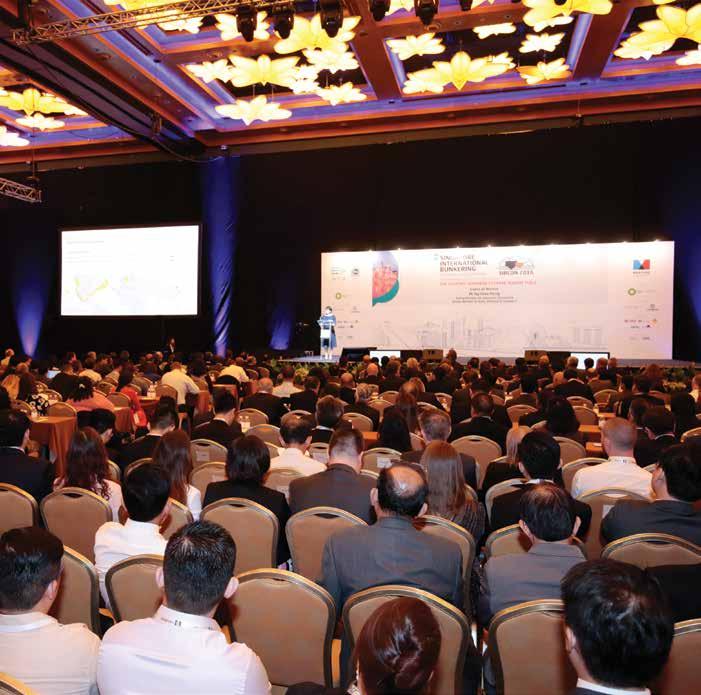
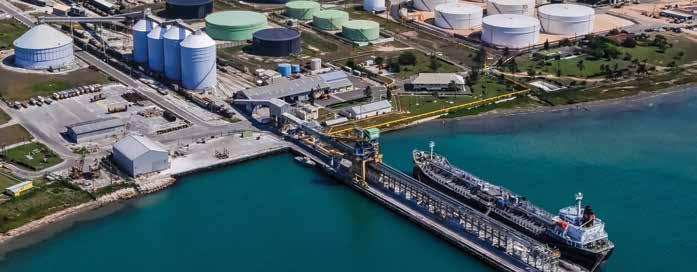
West Indies Petroleum is a fast-growing bunkering and fuel storage company, building a firm foundation to become the leading business partner for vessels in the Jamaican and Caribbean region
We value the work we do by investing the best effort for the job, providing reliable services in marine refueling and dependable fuel storage facilities.
By combining an auspicious moment in time following the widening of the Panama Canal, an advantageous location in the West Indies, an intuitive business sense and a heart for entrepreneurship risk, we are turning the company vision of becoming a prominent player in the fuel industry into a reality.
The number of companies that have entrusted their bunkering services to us is on the rise. We add extra value to our customers by delivering accurate, efficient and safe services.
Prompt feedback to any customer query is a must. Our reputation built over the years has helped us evolve into the key point of contact for bunkering in Jamaica.
We are proud to contribute to the Government of Jamaica’s vision of developing the logistics hub potential for vessels navigating in the region. Our dedication to the local marine fueling market ensures that we know our network. By bringing together the right people and the right customers, collectively, we are ever evolving.
A strong vision needs a committed action plan.
We work on expanding our operations by appropriating extra storage facilities. The newly-adopted Port Esquivel facility, which is our first land-based plant, will grow our capacity to ensure a consistent supply of competitively priced fuel to our client network. Right now, we are adapting the terminal by conforming it to storage requirements for residual fuel oil which will be fully operational by end of December 2016. At that stage, we will be all set to deliver to our customers at multiple supply points across Jamaica.
Round-the-clock, we are fully prepared to deliver fast-rate products and services:
• Largest bunker capabilities in Jamaica
• Storage in excess of 700,000 barrels
• All grades of marine fuels and distillates
Flexible prices with no minimal volumes
• Safe efficient delivery
We keep the lines of communication open to our current and prospective customers. Count on West Indies Petroleum to deliver top-level bunkering business as we are:
• Centrally positioned between three key shipping lanes
• Supplying within Jamaican waters 24 hours a day
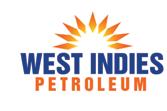
• Delivering by barge at inner anchorage in Kingston harbour to all vessel types
Distributing by truck to other Jamaican ports
Ours is the vision of integrity and excellence.
By blending core principles of accuracy, safety and efficiency with compliance to strict regulatory standards in the area we advance the quality of our services. Our supply agreement guarantees fuel costs management within budget and standardized services you can rely on. By adhering to quantity and quality certification in long-term contracts our clients get consistent fuel quality for affordable pricing.
We are aware that excellence is a work in progress and remain dedicated to constant improvement. The building of a high-quality company is unstoppable when connected with a strong business hunger. We have laid the groundwork to service the enhanced maritime potential of the widened Panama Canal and meet high fuel demands of multiple shipping companies.
Along with growing in quantity, we mature in quality, and as the Jamaican region increases its importance in the process of establishing a global logistics hub, West Indies Petroleum will be wired to go in full force.
Turkish Deniz News Agency has held its 11th International Golden Anchor Awards Arkas Bunkering won the Golden Anchor in the “Best Bunkering Company” category
Turkish Deniz News Agency has held its 11th International Golden Anchor Awards. Arkas Bunkering won the Golden Anchor in the “Best Bunkering Company” category.
Gathering together both the prominent national and international players of the maritime sector, The International Golden Anchor Achievement Awards Ceremony was hosted by the Deniz News Agency for the 11th time in Turkey.
This year a total of 15 awards, 3 of which international,
were presented in 11 categories in the ceremony under the motto “Merit Brings Praise”.
The Golden Anchor for the “Best Bunkering Company” was handed to Ufuk Erinc, General Manager of Arkas Bunkering and Trading S.A.
Arkas Bunkering Makes a Strong Impression with its Achievements
Serving with its five modern double-hull barges, Arkas Bunkering is the leading player of the market with its superior quality fuel and competitive prices.
According to the 2015 Petroleum Market Report issued by EMRA, Arkas Bunkering ranked number one with sales totalling 1 million tons.
In April this year, Arkas Bunkering supplied the giant petroleum exploration vessel Noble Globetrotter II with M/T Cesme, the biggest bunker vessel of Turkey and broke a record by supplying the largest marine gas oil amount in a single operation. These various achievements have paved the way to the Golden Anchor Award for Arkas Bunkering.

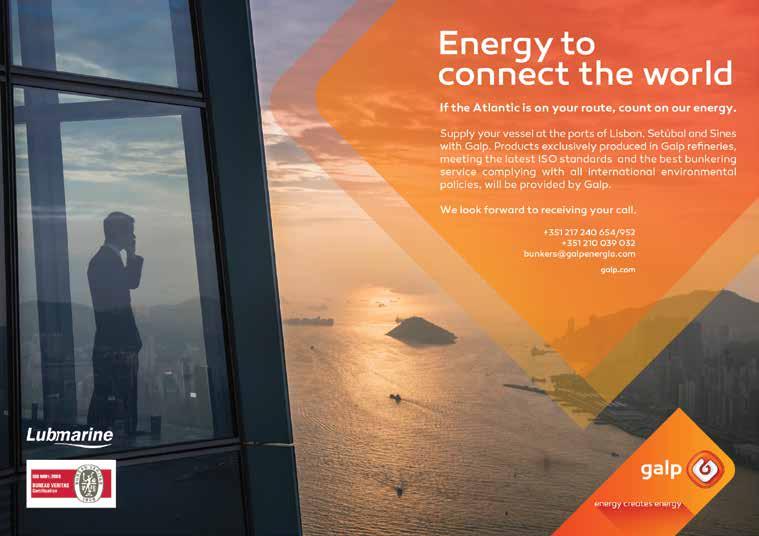
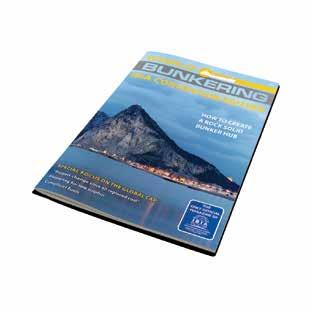
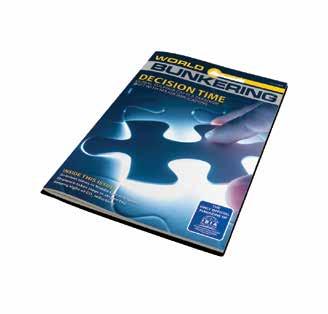
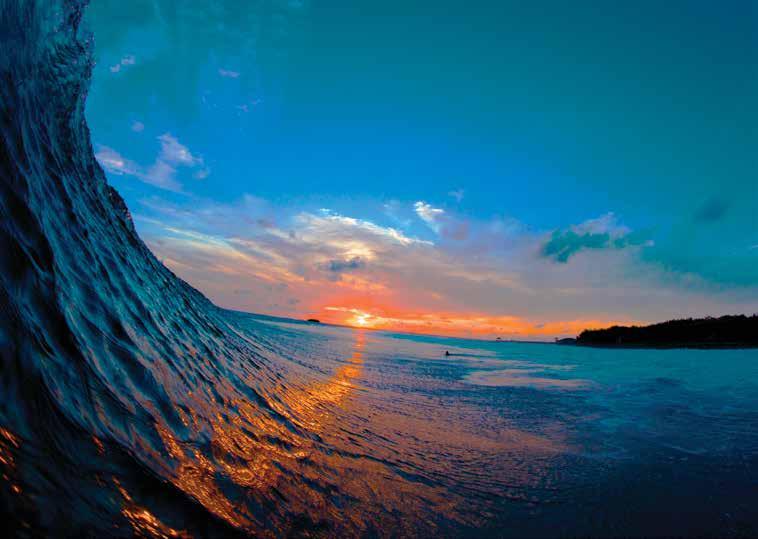
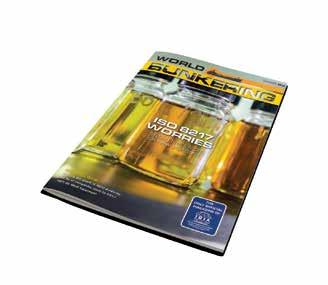
The International Bunker Industry Association (IBIA) was formed in 1992 to provide an international forum to address the concerns of all sectors of the bunker industry.
IBIA is an international organisation with members in over 70 countries worldwide. Members comprise Shipowners, Charterers, Bunker Suppliers, Traders, Brokers, Barging Companies, Storage Companies, Surveyors, Port Authorities, Lawyers, Protection and Indemnity Clubs and Maritime Consultants.
As an association dedicated to its membership, IBIA reflects members’ wishes and reacts to their needs – World Bunkering is the official journal of IBIA and a prime communication solution in complying with this vital requirement.
• To provide an international forum to address the concerns of all sectors of the international bunker industry.
• To improve and clarify industry practices and documentation.
• To represent the industry in discussions with relevant governmental and non-governmental bodies and to make the concerns of the industry known to such bodies.
• To assist members in the event of disputes by identifying the options and exploring the alternatives open to them and eventually to provide a panel of suitably experienced mediators and arbitrators.
• To increase the professional understanding and competence of those working in the industry.
World Bunkering has an international circulation to Ship Owners, Ship Managers, Ship Charterers, Ports, Suppliers, Traders, Brokers and Services, of which include both IBIA members and trusted non-members plus availability at various industry events.
World Bunkering is the only official magazine of The International Bunker Industry Association.
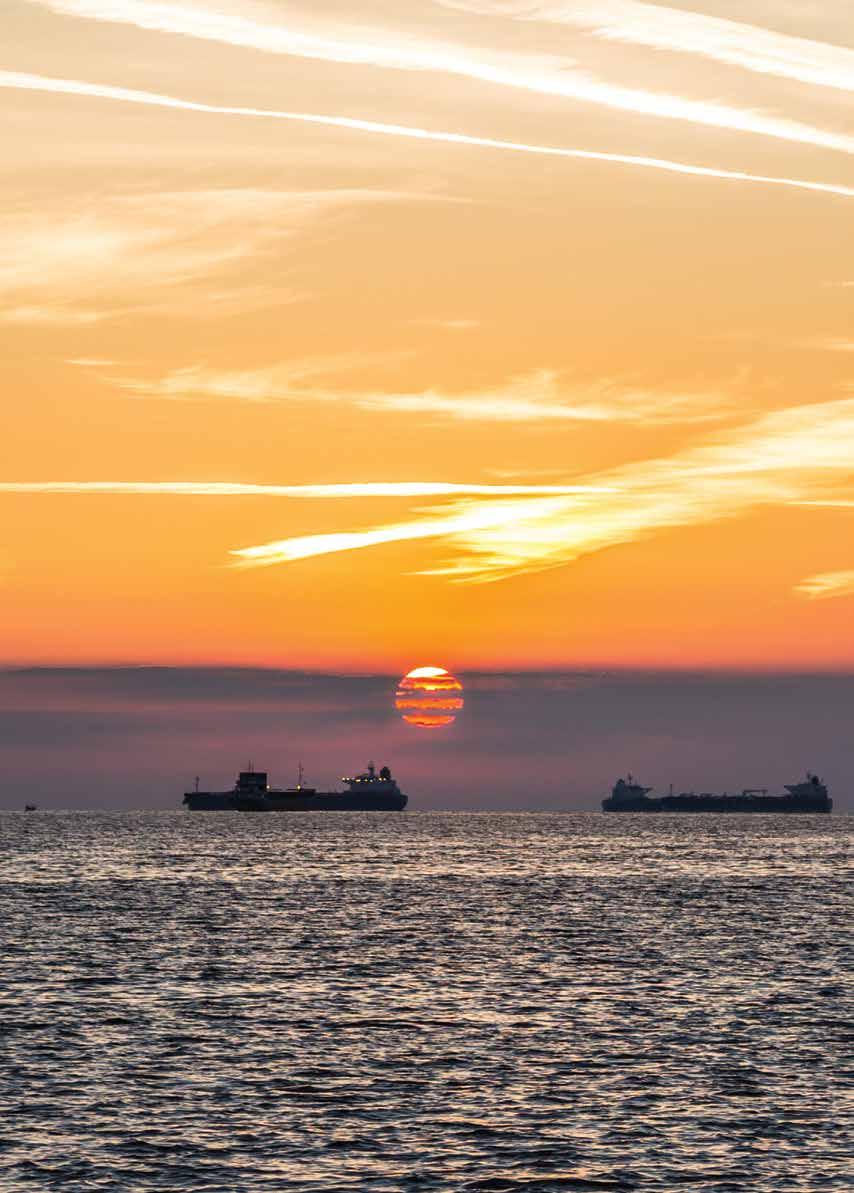
SPECIAL FEATURES:
Traders
Is the role of traders changing? What impact has the OW collapse had on them? We ask what does the future hold for bunker traders.
Fuel Quantity
As Singapore introduces mandatory installation of mass flow metering system on its barge fleet we look at what impact this move is having globally. Will other bunker hubs follow suit?
I.T.
Recent incidents have drawn attention to cyber security issues in the maritime sector. We ask whether the bunker industry ought to be concerned and if so what it needs to do.
Lubricants
Our annual report on this important topic looks at what the manufacturers are offering in response to an increasingly complex market.
GEOGRAPHICAL FOCUS:
Western Mediterranean
The western entrance to the Mediterranean is an ideal bunkering location, with a huge volume of shipping passing by. But are ports in the area making the most of their geographical advantage?
Africa
West Africa continues be challenging for global bunker operators, hijacking and lawlessness remaining serious problems. But we also look at positive developments within region. In southern Africa we report on developments at the main ports along the Cape.
The widened Panama Canal has been open for several months now. What difference is it making? Meanwhile the North American ECA is now well established. We look at how that has impacted on the Caribbean bunker market.
UAE
In the run-up to the FUJCON Conference in Fujairah in March, we report on bunkering around the UAE’s ports, both inside and outside the Gulf. How will the 0.50% sulphur limit in 2020 impact on the country’s important bunkering industry?

• HIGH QUALITY OIL PRODUCTS
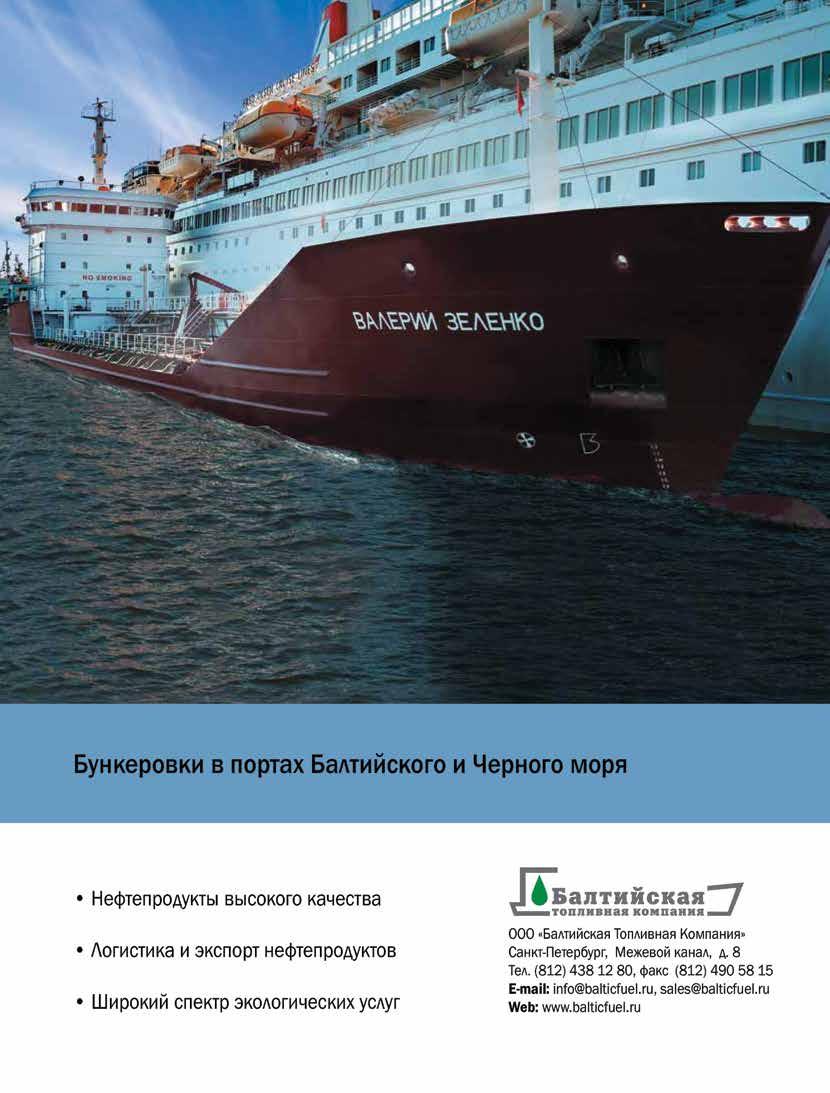
• LOGISTICS AND EXPORT OF OIL PRODUCTS
• WIDE RANGE OF ENVIRONMENTAL SERVICES Baltic Fuel Company Saint-Petersburg, Mezhevoi Kanal, 8,
E-mail: info@balticfuel.ru, sales@balticfuel.ru Web: www.balticfuel.ru
IBIA ANNUAL DINNER 2017
Once again the now world famous IBIA Annual Dinner will be taking place at the opening of IP Week. This is the largest bunkering dinner in the world and is a unique opportunity to host and meet key people in the industry. As usual the event will be held at Grosvenor House Hotel, Park Lane, London W1K 7TN. Book your table and tickets now to avoid disappontment as numbers are strictly limited. http://ibia.net/event/ibia-annual-dinner-2017/
FUJAIRAH BUNKERING & FUEL OIL FORUM
The 10th International FUJCON 2017 with international recognition and attendance from 50 countries covering diversified sectors of the bunkering industry, FUJCON has raised Fujairah’s profile as an internationally recognized service Anchorage, being amongst the world’s top three bunkering locations and as a global hub for both oil storage and oil product supply.
EUROPEAN SHIPPING WEEK 2017 BRUSSELS
European Shipping Week is intended to be a platform where policy-makers from the main EU institutions will meet and engage with European shipowners and other stakeholders from the shipping sector. The focus is on shipping, in all its different aspects.
This week-long series of high level events – features a major conference and Gala Dinner – bringing together the major players in the shipping industry with the primary aim of promoting the strengths of European shipping to legislators in Brussels such as the European Commission, European Parliament and the Council of Ministers. www.petrospot.com/events

PANAMA MARITIME XIII
This major biennial conference and exhibition is designed to showcase shipping and maritime services in the Americas, will provide a stunning opportunity to visit the giant locks on the newly expanded Panama Canal and to celebrate the 100th anniversary of the Panama Flag Registry. The line-up of confirmed speakers includes the Secretary General of the IMO, the head of the Panama Maritime Authority and Administrator of the Panama Canal Authority. Large delegations form the Netherlands and Germany will join 500 plus delegates and exhibitors from throughout the Americas and beyond. lbh@petrospot.com
30 MAY - 2 JUNE 2017 NOR-SHIPPING 2017
This major shipping event takes place in Oslo and Lillestrøm, Norway. Nor-Shipping 2017 is taking a pro-active approach to the challenges facing the industry, adopting an overall theme of ‘Catalyst for Change’, while dedicating exhibition Hall A to Disruptive Sustainability. Problem to Profit marks another move against convention, tapping into fresh talent while building bridges between established players and future leaders. https://messe.no/en/nor-shipping/
LONDON INTERNATIONAL SHIPPING WEEK 2017
This, the organisers say, will be the ‘must attend’ event of 2017, offering over 160 industry functions and unique networking opportunities for leaders across all sectors of the international shipping industry – regulators, charterers, ship owners, ship managers, bunker suppliers, lawyers, ship brokers, bankers, insurers, insurance brokers, commodity traders and brokers, ship suppliers, port operators, shipping service providers and many more.
The sell-out one-day LISW17 Conference and Gala Dinner, to be held on Thursday September 14, will attract the very highest level government and shipping industry leaders from the UK and around the world to crown what promises to be another amazing week. www.petrospot.com/events

